Product Discontinuation Content Hub
The content discusses effective strategies for managing discontinued products, focusing on communication, customer impact, and financial considerations.

In today's post I'm going to discuss the important topic of discontinuing products, and we must recognize its significance in the ever-evolving landscape of business. Just as we have faced challenges in our lives that required difficult decisions, companies must also navigate the complexities of ceasing the production and sale of certain products. This process is not merely a matter of numbers; it deeply affects customers, employees, and the broader community.
Understanding the reasons behind these decisions, the financial implications, and the emotional responses involved is crucial for fostering trust and maintaining relationships. By approaching this subject with empathy and strategic insight, we can ensure that businesses not only survive but thrive in a manner that respects the needs and aspirations of all stakeholders involved.
Exploring discontinued products involves understanding the reasons, impacts, and strategies involved in this complex process. Companies discontinue products for various reasons such as low demand, outdated technology, or shifting business priorities. Effective business strategy development is crucial to manage this transition smoothly and maintain customer trust.
Reasons for Discontinuation
Discontinued products often result from strategic decisions driven by changes in consumer demand, industry trends, or technological advancements. For instance, companies may discontinue products that no longer align with their long-term objectives or profitability goals. This decision allows businesses to focus on more relevant and profitable offerings.
Impacts on the Target Market
The discontinuation of a product can significantly impact the target market and target audience. Customers may feel disappointed, leading to negative reviews on social media platforms. This feedback can influence others' perceptions, potentially harming the brand image and reputation.
Strategies and Best Practices
To navigate product discontinuation effectively, companies should employ well-planned marketing strategies. Business strategy examples include clear communication about the discontinuation through various channels and offering suitable alternatives to customers. This approach helps maintain customer support and loyalty while minimizing negative impacts.
Case Studies and Learning
Analyzing case studies of product discontinuation provides valuable insights into best practices and strategies for handling these situations. For example, Apple's discontinuation of the iPod Classic allowed the company to shift focus to newer products like iPhones and iPads, demonstrating effective brand reputation management. By learning from such examples, businesses can enhance their approach to product discontinuation, ensuring a smooth transition and continued growth.
Alright, folks, let’s talk about discontinued products in a way that’s as clear as a bell and as entertaining as a good ol’ stand-up routine. Here we go!
I. What Are Reasons for Discontinuing Products?
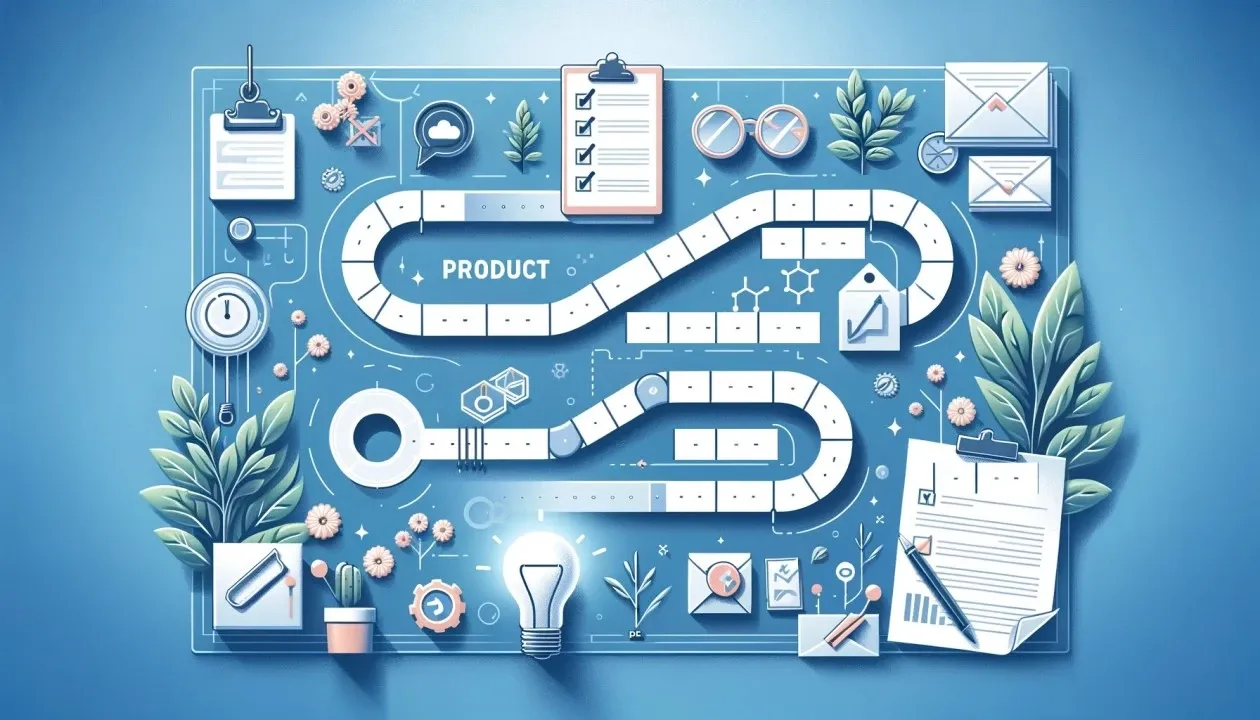
So, why do companies decide to kick a product to the curb?
Well, it usually comes down to a few things: sales are droppin’ faster than a hot potato, customers are lookin’ for something different, production costs are higher than a giraffe’s neck, or maybe some legal stuff is gettin’ in the way. Sometimes, it’s just time to focus on the stuff that’s makin’ the cash register sing!
Well, let me tell ya, the Gastrorejuvenator crowdfunding campaign (Join Below) is like a second chance for one of those discontinued 90s products that got the boot from not one, but two big ol' companies—GNC and Twinlab! Ain't that a hoot? It's like trying to bring back your favorite pair of jeans after they went outta style! So, if you're lookin' to get in on the action and support something that’s been through the wringer, this is your shot! Get ready to rejuvenate yourself and show those companies they might've made a mistake! Git 'er done!
Business leaders gain valuable insights from understanding why products fail. This knowledge shapes a successful business strategy, influencing how companies approach potential customers and boost revenue.
Smart companies maintain a list of discontinued products. They study these failures to avoid repeating mistakes. Even brands with a bad reputation can learn from this approach.
A business strategy analyst will confirm: grasping product discontinuation is crucial. It informs business operations and strategy, helping companies adapt swiftly to market changes.
Companies that track customer impact issues related to discontinued products stay competitive. They use this data to refine their offerings and marketing tactics. A discontinued products website can serve as a valuable resource in this process.
By analyzing product endings, businesses make smarter inventory decisions. This cuts costs and increases profits. It also helps companies anticipate market shifts and respond quickly.
Understanding why products fail keeps businesses relevant and profitable. In today's fast-changing market, this knowledge gives companies a significant edge over competitors.
Best Practices
- Best Practice #1: First of all, regularly monitor sales performance and market trends to identify underperforming products. Next, use this analysis to make timely decisions about discontinuation. Moreover, consider customer feedback to ensure your product lineup remains aligned with consumer preferences and market demands. Finally, evaluate the broader impact of these decisions[1][4].
- Best Practice #2: When stopping a product, talk clearly to customers. Tell them why and offer other choices. This keeps them happy and trusting. Use personal messages, public notices, and suggest good replacements. This helps keep customers loyal and satisfied with your brand[2][3].
- Best Practice #3: First, look at how stopping a product affects money and work. Check costs and profits. See how it changes your business plans. This helps you move resources to better products. It also helps avoid problems. By doing this, you make smarter choices for your business[3][4].
Learn More
- [Why do Companies Discontinue Products? - Factors Revealed](https://www.selfmoneycare.com/post/why-do-companies-discontinue-products)
- [Product Discontinuation - Adogy](https://www.adogy.com/terms/product-discontinuation/)
- [How to Discontinue a Product in Decline: Key Factors - LinkedIn](https://www.linkedin.com/advice/1/what-key-factors-consider-when-discontinuing-product-decline)
II. What Are the Financial Implications of Discontinued Products?

Now, let me tell ya, discontinuing a product ain’t just a walk in the park. It can hit the ol’ wallet pretty hard. Companies gotta think about how this decision will affect their finances and whether they can put those resources to better use somewhere else.
Business turnaround strategies often involve tough decisions about product lines. Smart leaders know that discontinuing products can have major financial impacts. They must weigh these carefully when crafting the best business strategies.
Even brands with a bad reputation can benefit from cutting underperforming products. This frees up resources for more promising ventures. It also allows companies to focus their marketing campaigns on products customers expect and want.
When a company stops making a product, it faces immediate costs. These include selling off leftover stock and losing future sales. But there are hidden costs too. The company might miss out on opportunities or damage its image.
Smart businesses look at both the obvious and less obvious money effects. They consider how stopping a product will change their cash flow and profits. They also think about how to use their resources better.
In the end, knowing the full financial picture helps companies make smarter choices. It guides them in deciding which products to keep and which to drop. This knowledge is key to staying competitive and meeting what customers expect in today's fast-changing market.
Why Are the Financial Implications of Product Discontinuation Important?
Understanding the bottom line impact of product discontinuation is crucial for businesses. It helps them determine if ending a product will boost or hurt their finances. This knowledge shapes business operations and informs types of business strategy.
Product lifecycle management best practices include regular customer impact assessments. These evaluations reveal how ending a product affects both finances and customer relationships.
Smart companies use this financial insight in three key ways:
1. They allocate resources more effectively
2. They increase profits by focusing on high-performing products
3. They ensure long-term business sustainability
This financial understanding helps businesses weigh their options carefully. They can compare the costs of maintaining underperforming products against investing in promising new ones. This balanced approach leads to smarter strategic decisions.
In essence, grasping the financial implications of product discontinuation is vital. It guides businesses in making wise choices, managing their product portfolio more effectively, and staying ahead of competitors in a dynamic market.
Best Practices
- Best Practice #1: First of all, conduct a comprehensive financial analysis before discontinuing a product. Next, evaluate its impact on profitability and cash flow by considering fixed and variable costs. Moreover, analyze potential savings from reduced production and marketing expenses, while factoring in any revenue loss from discontinuing sales. Finally, make informed decisions.
- Best Practice #2: Think about keeping or stopping a product. Look at how you use your money and time. Could these help other products more? Check what customers want and market trends. See if new products might work better. This helps you make smart choices for your business.
- Best Practice #3: Plan how to handle leftover stock and move resources. Sell what's left or use it elsewhere. Think about using factories for new things. Move workers and money to other jobs. Good planning helps avoid money problems when stopping a product. It makes the change easier.
Learn More
- [How to Discontinue a Product in Decline: Key Factors - LinkedIn](https://www.linkedin.com/advice/1/what-key-factors-consider-when-discontinuing-product-decline)
- [Why do Companies Discontinue Products? - Factors Revealed](https://www.selfmoneycare.com/post/why-do-companies-discontinue-products)
- [Knowing when to discontinue a product | Onsight](https://www.onsightapp.com/blog/knowing-discontinue-product)
III. What Is The Role of Market Research Regarding Discontinuing Products?
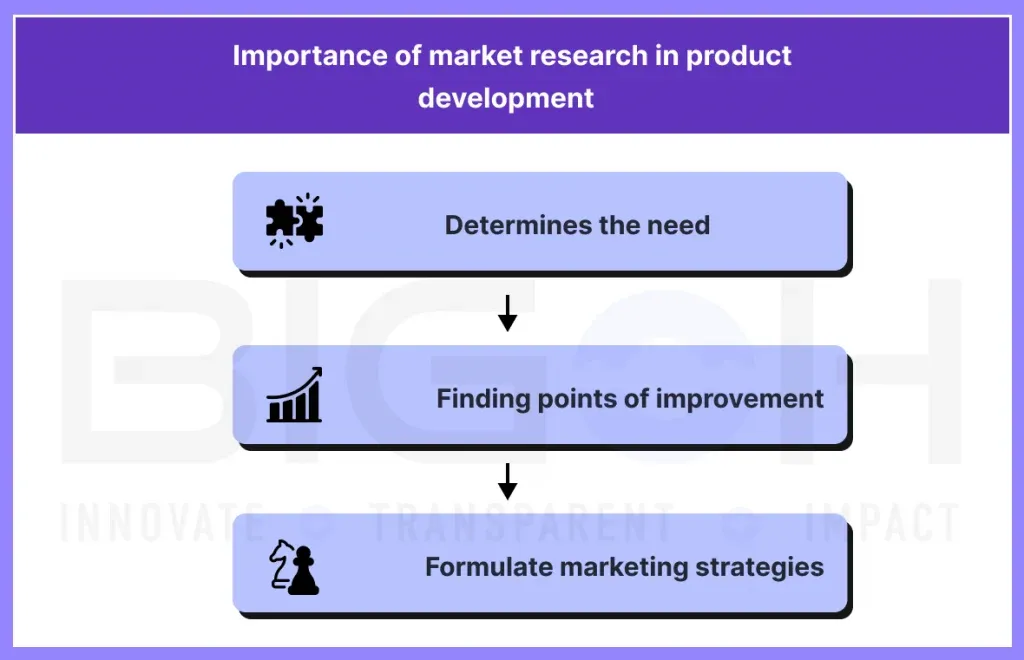
Market research is like the GPS for businesses. It helps ‘em figure out where the customers are headed and what they really want. You don’t wanna be makin’ decisions based on guesswork, folks!
Market Research and Product Discontinuation
Understanding the Role
The role of market research in product discontinuation is crucial and multifaceted. Primarily, it involves gathering and analyzing data to inform the decision-making process about whether to cease production and sales of a product. This research serves as a vital tool in understanding various key factors.
Key Insights Provided
Firstly, market research provides valuable insights into consumer preferences. By understanding what customers want and need, businesses can better assess a product's relevance. Secondly, it sheds light on current market trends, helping companies stay in tune with the ever-changing marketplace. Additionally, it offers a clear picture of competitive dynamics, allowing businesses to gauge their product's performance against rivals.
Assessing Discontinuation
Moreover, market research is critical in assessing whether a product should be discontinued. It does this by offering a comprehensive view of the product's performance in the market. This information is essential for making informed decisions about a product's future.
Understanding Potential Impacts
Furthermore, this research helps businesses understand the potential impacts of discontinuation. For instance, it can reveal how ceasing a product might affect:
1. The company's market position
2. Its existing customer base
3. Overall financial performance
Conclusion
In conclusion, market research plays a vital role in the product discontinuation process. By providing a wealth of data and insights, it enables businesses to make smarter, more informed decisions. This, in turn, helps companies maintain their competitive edge and ensure long-term success in the marketplace.
Why Is The Role of Market Research Important?
The Role of Market Research in Product Discontinuation
Providing Evidence-Based Insights
Market research plays a vital role in discontinuing products by providing evidence-based insights that guide strategic decisions. First and foremost, it helps companies identify underperforming products in their lineup. Moreover, it sheds light on the reasons behind their decline, such as shifts in consumer preferences or rapid technological advancements.
Benefits of Leveraging Market Research
By effectively leveraging market research, businesses can reap several benefits. For instance, they can make more informed decisions that minimize risks and maximize opportunities. This approach ensures that valuable resources are allocated to more profitable ventures, rather than being tied up in declining products.
Understanding Customer Sentiment
Additionally, market research serves another crucial purpose. It aids in understanding customer sentiment and potential backlash that may arise from discontinuing a product. Armed with this knowledge, companies can then develop effective communication strategies. These strategies help smooth the transition for customers, potentially reducing negative impacts on brand loyalty and overall customer satisfaction.
Assessing the Competitive Landscape
Furthermore, market research provides a clear picture of the competitive landscape. This insight allows businesses to assess how discontinuing a product might affect their market position. It also helps identify potential gaps that competitors might fill, enabling proactive strategic planning.
Conclusion
In conclusion, market research is not just helpful—it's essential in the product discontinuation process. By providing a wealth of data-driven insights, it empowers businesses to make smarter decisions, manage customer relationships more effectively, and stay ahead in a competitive marketplace. This comprehensive approach ensures that product discontinuation becomes a strategic move rather than a reactive measure.
Best Practices
- Best Practice #1: First, conduct comprehensive consumer surveys to gather feedback. Next, analyze product satisfaction, usage patterns, and preferences. Moreover, use this data to identify if a product meets customer needs. In addition, look for gaps leading to its decline. Finally, understand consumer sentiment to make informed discontinuation decisions.
- Best Practice #2: Watch market trends and what rivals do. Look at new tech and how people's buying habits change. See what new products others sell. This helps you spot changes that might hurt your product. Knowing what's happening in the market helps you make smart choices early.
- Best Practice #3: First, look at sales numbers and how well a product does. Check how much it sells, its profits, and its share of the market. This helps you see if the product makes money. Then, decide if it's worth keeping or if you should use your time and money on better products.
Learn More
- [Why do Companies Discontinue Products? - Factors Revealed](https://www.selfmoneycare.com/post/why-do-companies-discontinue-products)
- [How can you effectively discontinue a product? - LinkedIn](https://www.linkedin.com/advice/0/how-can-you-effectively-discontinue-product-y2qxf)
- [Practice of Product Discontinuation | Sequent Blog](https://sequentlearning.com/insights/the-practice-of-product-discontinuation/)
IV. What Is ... Future Trends in Discontinued Products?

Lookin’ ahead, we’re gonna see more companies makin’ smart moves based on data. They’ll be usin’ real-time info to decide when to pull the plug on a product. It’s like havin’ a crystal ball, but way cooler!
Future Trends in Product Discontinuation
Introduction
Future trends in product discontinuation point to exciting changes in how companies decide to stop making and selling certain products. As the business world keeps changing, companies need to stay on their toes. Let's explore what's coming up in this area.
Shifting Market Dynamics
First off, market dynamics are always shifting. This means businesses must keep a close eye on what's happening around them. At the same time, what customers want is also changing fast. On top of that, technology is racing ahead at breakneck speed. All these factors push companies to rethink how they handle product discontinuation.
Emerging Technologies and Sustainability
So, what's on the horizon? For starters, we're likely to see businesses using cool new tech tools. These might help them spot which products are falling behind before it's too late. Also, companies are getting more eco-friendly. This could mean saying goodbye to products that aren't kind to our planet.
Data-Driven Decision Making
But that's not all! Data is becoming a superpower in business decisions. In the future, we might see companies crunching numbers like never before to figure out which products should stay and which should go. This data-driven approach could lead to smarter choices and less waste.
Flexibility and Limited-Time Products
Lastly, businesses are learning to be more flexible. They might start testing the waters with limited-time products. If these don't work out, they can discontinue them without much fuss.
Conclusion
In a nutshell, the future of product discontinuation is all about being smart, quick, and in tune with the world around us. By embracing these trends, companies can stay ahead of the game and keep their product lineups fresh and exciting.
Why Are Future Trends in Product Discontinuation Important?
The Importance of Understanding Future Trends in Product Discontinuation
Introduction
Understanding future trends in product discontinuation is super important for businesses. Why? Because it helps them stay ahead in a market that's always changing. Let's break it down:
Adapting to Market Pressures
First off, companies are under a lot of pressure these days. They need to come up with new ideas and make their product lineups better. By knowing what's coming next in product discontinuation, they can make smarter choices. These choices help them keep up with what customers want and new tech developments.
Key Benefits of Trend Awareness
But that's not all! There are more benefits to keeping an eye on these trends:
1. Improved Operations
When companies use new discontinuation strategies, they can run things more smoothly. This means less wasted time and money.
2. Reduced Waste
By being smart about which products to stop making, businesses can cut down on unused stuff. This is good for the planet too!
3. Enhanced Brand Image
When a company shows it can change with the times, people notice. This can make customers trust and like the brand more.
The Big Picture
So, what does all this mean? Well, it's simple. By paying attention to future trends in product discontinuation, businesses can do a lot of good things at once. They can keep their products fresh and exciting, save money, help the environment, and make customers happy.
Conclusion
In the end, it's all about being ready for what's next. Companies that do this well are the ones that will stick around and do great things in the future. It's not just about today – it's about being ready for tomorrow too.
Best Practices
- Best Practice #1: First of all, embrace data-driven decision making using advanced analytics and AI. Next, assess product performance and market trends. Moreover, analyze consumer behavior, sales data, and competitive dynamics. In addition, use this information to identify underperforming products early. Finally, make informed decisions about which products to discontinue and where to allocate resources for better results.
- Best Practice #2: Think about the earth when stopping products. Look at which ones harm the planet more. Stop selling these first. This helps the environment and makes your brand look good. More people want earth-friendly products now. By doing this, you meet what customers want and help the planet.
- Best Practice #3: First, use new tech to stop products smoothly. Try digital tools to track stock and talk to people. Also, get customer feedback online. This makes the process easier and faster. It helps keep customers happy when you stop selling a product. New tech can make big changes simpler for your business.
Learn More
- [Discontinuing Product Lines and Embracing New Horizons — Amanda Weedmark](https://www.aweedmark.com/blog-main/discontinue-products)
- [Why do Companies Discontinue Products? - Factors Revealed](https://www.selfmoneycare.com/post/why-do-companies-discontinue-products)
- [The Practice of Product Discontinuation | Sequent Blog](https://sequentlearning.com/insights/the-practice-of-product-discontinuation/)
V. What Is ... Impact on Customers Regarding Discontining Products?

When a product gets the boot, it can leave customers feelin’ like they’ve been dumped by their high school sweetheart. Companies need to remember that and handle it with care.
Discontinuing products can significantly affect customers, causing ripples throughout their daily lives and purchasing habits. This analysis explores the various ways customers experience and respond to the loss of a familiar product.
Initial Customer Reactions
When a company discontinues a product, customers often feel disappointed and frustrated. They've grown accustomed to the product's presence in their routines and must now search for alternatives. This adjustment can be particularly challenging if the discontinued item has unique features or benefits not easily replicated by other products on the market.
Customer Impact Examples
Emotional Response
Customers may experience a range of emotions, from mild annoyance to genuine distress. For instance, when GNC discontinued their "Mood Formula" and Twinlab stopped producing their "Stress Formula B-50," users who relied on these specific herbal formulations for their well-being felt a significant loss.
Practical Challenges
The discontinuing of essential tools or products can disrupt work processes or daily routines. An example is the shift from tube amplifiers to solid-state amplifiers in the music industry, which led to perceived changes in audio quality and prompted some enthusiasts to create alternatives like the Nitewalker Bass Guitar Tube Preamps.
Customer Impact Analysis
Satisfaction and Loyalty
Discontinuing products often leads to decreased customer satisfaction. Loyal users may feel betrayed or undervalued by the brand, potentially damaging long-term relationships. Some customers might explore other offerings from the same brand, while others may switch to competitors entirely.
Purchasing Behavior
The loss of a preferred product can trigger significant changes in shopping habits. Customers may:
- Actively seek similar products from other brands
- Experiment with alternative solutions
- Stockpile remaining inventory of the discontinued item
Business Goals vs. Customer Support
Companies must balance their business goals with customer support when considering product discontinuation. While discontinuing a product may align with strategic objectives, it's crucial to consider the potential negative impact on customer relationships and brand perception.
Adapting to Change
Customers often face the challenge of adapting to new products or processes when their go-to items are no longer available. This adaptation may involve:
- Learning to use new tools or technologies
- Adjusting personal or professional routines
- Accepting compromises in features or performance
Conclusion
The impact of discontinuing products on customers extends beyond mere inconvenience. It can affect emotional well-being, disrupt established routines, and alter brand loyalty. Companies should carefully weigh these factors against their business goals when making discontinuation decisions, ensuring they provide adequate support and alternatives to minimize negative customer impact.
Why Is Impact on Customers Important?
The Importance of Understanding Customer Reactions
Introduction
Understanding how customers feel when a product goes away is super important for companies. Let's explore why this matters so much:
Impact on Company Reputation
First off, it's all about the company's reputation. When customers like a product and it suddenly disappears, they might get upset. This can make them think less of the brand. It's like when your favorite restaurant stops serving your favorite dish - you might not want to go there as often anymore.
Customer Loyalty and Brand Perception
Secondly, it affects how loyal customers are. If people feel let down or left hanging, they might start looking at other brands. On the flip side, if a company handles the situation well, customers might stick around and try other products.
Additional Considerations
But that's not all! There's more to consider:
1. Future Sales Impact: Unhappy customers might not buy as much from the company in the future.
2. Trust Issues: If customers feel abandoned, they might not trust the company as much. It's like when a friend breaks a promise - you might think twice before relying on them again.
3. Learning Opportunities: By paying attention to how customers react, companies can make better choices in the future. It's like learning from your mistakes to do better next time.
Conclusion
So, what's the takeaway? Well, it's crucial for companies to handle product discontinuation carefully. They need to think about how customers will feel and react. By doing this, they can:
- Keep customers happy and loyal
- Protect their brand's good name
- Learn important lessons for the future
In the end, it's all about keeping a good relationship with customers. When companies do this right, everyone wins. Customers feel heard and valued, and companies can keep growing and improving. It's a win-win situation.
Best Practices
- Best Practice #1: First of all, communicate transparently about product discontinuation. Next, explain the reasons and timeline clearly to customers. Moreover, provide advance notice to manage expectations. In addition, offer information about alternative products or solutions. Finally, use this approach to ease the transition and reduce negative reactions from customers[1][3].
- Best Practice #2: Offer other good choices when you stop a product. Show customers similar items you sell. Or team up with other brands to give options. You can also give deals on these new choices. This helps keep customers happy and loyal to your brand even when a product goes away[2][3].
- Best Practice #3: First, ask customers what they think about stopping a product. Talk to them through surveys, chats, or social media. Listen to what they need next. This helps you plan better for new products. It also shows you how to handle stopping products better in the future. Customers' ideas can guide your choices[1][4].
Learn More
- [How can you effectively discontinue a product? - LinkedIn](https://www.linkedin.com/advice/0/how-can-you-effectively-discontinue-product-y2qxf)
- [Understanding the short-term impact of product discontinuations on consumer behavior - AUT](/content/files/server/api/core/bitstreams/ba09240b-883b-4613-8c71-bc26255397b6/content.pdf)
- [Product Discontinuation - Adogy](https://www.adogy.com/terms/product-discontinuation/)
- [How to Discontinue a Product in Decline: Key Factors - LinkedIn](https://www.linkedin.com/advice/1/what-key-factors-consider-when-discontinuing-product-decline)
VI. What Is ... Customer Feedback and Product Development Regarding Discontinued Products?
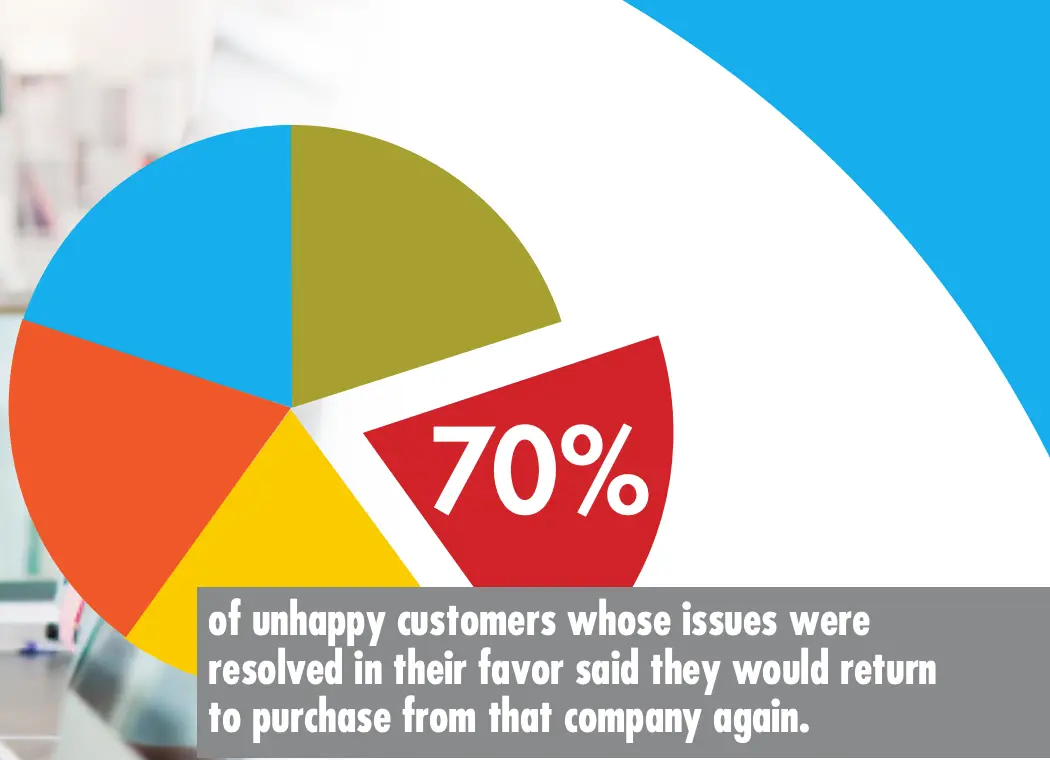
Customer feedback is like gold, folks! It helps businesses know what’s workin’ and what ain’t. Listenin’ to customers can lead to better products in the future.
Customer feedback is crucial in discontinuing products and development because it provides direct insights into consumer preferences and expectations. Understanding how customers perceive a product and their reactions to its discontinuation can guide companies in refining their product offerings and developing new products that better meet market needs. This approach helps maintain customer loyalty, reduces the risk of negative backlash, and ensures that new products are well-received.
Additionally, leveraging customer feedback can identify gaps in the market, leading to innovative product development that aligns with consumer demands and enhances competitive advantage.
Why Are Customer Feedback and Product Development Important?
The Importance of Listening to Customers
Introduction
Let's talk about why listening to customers is super important when companies stop making products or create new ones. It's all about understanding what people really want!
Learning from Customer Feedback
First off, when customers share their thoughts, companies learn a lot. They find out what people like and don't like about their products. This is really helpful when deciding whether to stop making something or not.
Key Reasons for Listening
So, why is this so important? Well, there are a few big reasons:
1. Customer Happiness: It keeps customers happy. When people feel heard, they're more likely to stick with a brand. It's like when your friend listens to your ideas - you want to hang out with them more!
2. Reducing Upset Customers: It stops people from getting upset. If a company knows how customers feel, they can handle changes better. This means fewer angry customers when a product goes away.
3. Creating New Products: It helps make new products that people will love. By listening to what customers want, companies can create cool new things that people actually need.
Additional Benefits
But that's not all! There are even more benefits:
- Spotting New Opportunities: Companies can spot new opportunities. Maybe there's a product no one else is making that people really want.
- Gaining Competitive Edge: It gives companies an edge over their competitors. If they know what customers want better than anyone else, they can stay ahead of the game.
Conclusion
In the end, paying attention to what customers say is a smart move. It helps companies make better choices about what to make and what to stop making. This way, everyone wins - customers get products they love, and companies do well in business. It's all about working together to make things better.
Best Practices
- Best Practice #1: First of all, conduct regular surveys and focus groups with customers. Next, gather detailed feedback on their product experiences and reactions to discontinuations. Moreover, use this data to gain insights into customer preferences and expectations. In addition, apply these insights to make informed decisions about product discontinuations. Finally, use this information to guide new product development.
- Best Practice #2: Look at what customers say using smart tools. Find common likes and dislikes. See what needs to get better. This helps you know why some people aren't happy. Then, you can make new products that people want more. Understanding customer thoughts leads to better choices.
- Best Practice #3: Let customers try new products early. Ask them what they think. Use their ideas to make products better. This way, you know if people like your new items before you sell them. It helps make sure your new products fit what customers want. This can lead to more sales.
Learn More
- [Understanding the short-term impact of product discontinuations on consumer behavior - AUT](/content/files/server/api/core/bitstreams/ba09240b-883b-4613-8c71-bc26255397b6/content.pdf)
- [How to Communicate a Product Discontinuation to Customers | CO](https://www.uschamber.com/co/grow/customers/communicating-product-discontinuation-to-customers)
- [Why do Companies Discontinue Products? - Factors Revealed](https://www.selfmoneycare.com/post/why-do-companies-discontinue-products)
VII. What Is ... Customer Retention Strategies Regarding Discontinued Products?
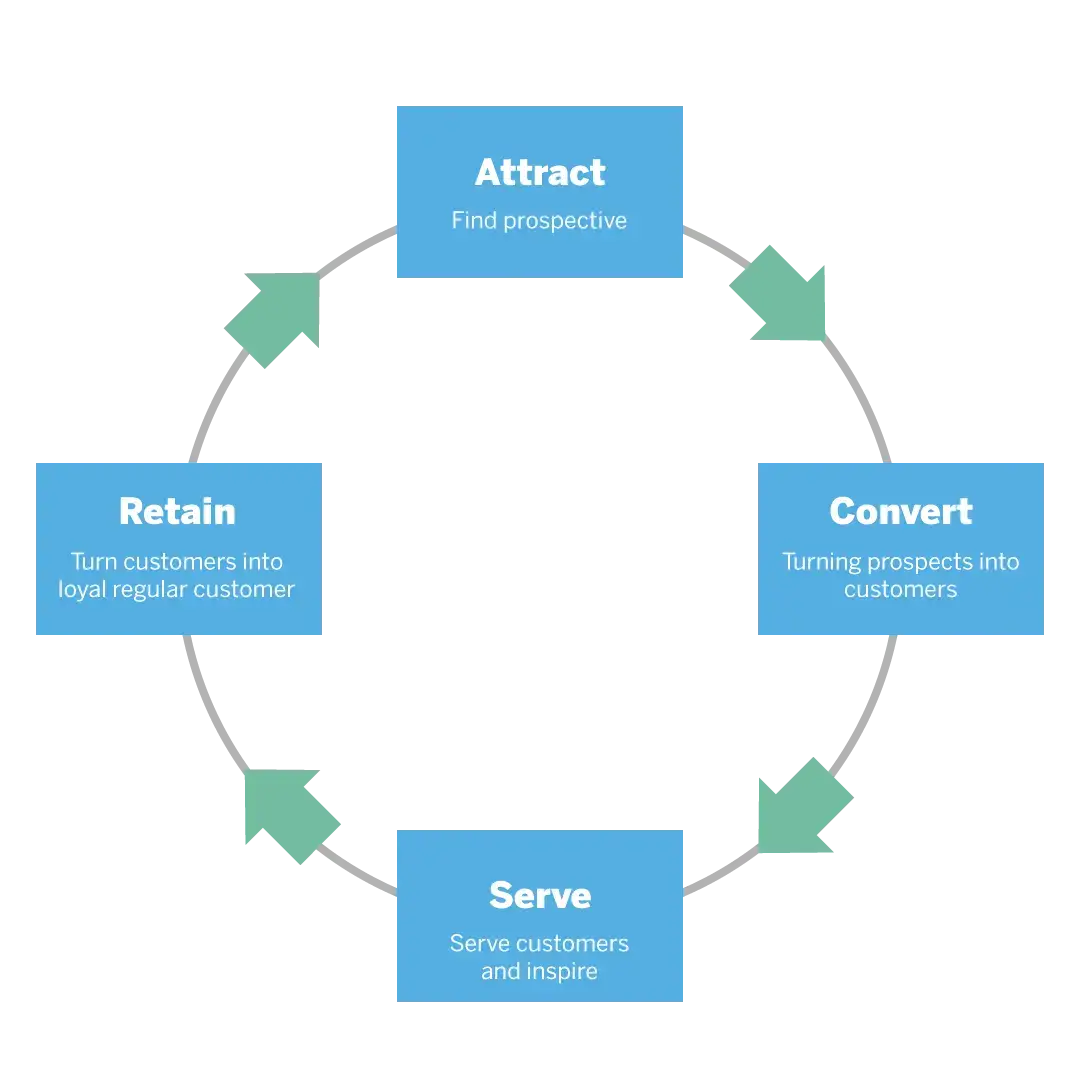
To keep customers from jumpin’ ship, companies should have some tricks up their sleeves. Offerin’ alternatives or sweet deals can keep ‘em loyal, even when their favorite product is gone.
Customer retention strategies regarding product discontinuation involve the methods and practices that businesses use to maintain their customer base and loyalty when a product is no longer available. These strategies aim to minimize customer dissatisfaction and prevent them from switching to competitors by providing alternatives, clear communication, and incentives to stay engaged with the brand.
Why Is Customer Retention Important?
The Importance of Keeping Customers Happy
Introduction
Let's talk about why keeping customers happy is super important when a company stops making a product. It's a big deal for businesses, and here's why:
Financial Impact
One, it's all about money. Happy customers keep buying stuff, which means more cash for the company. But that's not all - there's more to it!
Brand Reputation
Secondly, it's about the company's good name. When customers feel taken care of, they say nice things about the brand. It's like when you tell your friends about a great restaurant - you're helping that place out!
Additional Benefits
But wait, there's even more:
1. Customer Retention: It's cheaper to keep old customers than find new ones. Think of it like keeping your old toys in good shape instead of always buying new ones.
2. Market Strength: When customers stick around, the company stays strong in the market. It's like having a bunch of loyal friends who always have your back.
3. Cross-Selling Opportunities: Happy customers often try new products from the same company. It's like when you love one flavor of ice cream, so you try others from the same brand.
Navigating Product Discontinuation
Now, here's the tricky part: When a product goes away, customers might feel let down. It's like when your favorite TV show ends - you might feel a bit sad or annoyed. But smart companies have tricks to keep people happy:
- They might offer something else that's just as good.
- They explain why things are changing in a way that's easy to understand.
- Sometimes, they give special deals to say "thanks for sticking with us!"
Conclusion
In the end, it's all about keeping customers feeling good, even when things change. When companies do this right, everybody wins. Customers get what they need, and businesses keep growing. It's like keeping a garden healthy - with the right care, it keeps blooming year after year.
Best Practices
- Best Practice #1: First of all, communicate transparently and early about product discontinuation. Next, explain the reasons clearly to customers. Moreover, offer information about alternative products or solutions. In addition, be open and honest to build trust. Finally, this approach helps customers feel valued and reduces negative reactions to the discontinuation.
- Best Practice #2: Give deals on other products when you stop one. Offer discounts or extra points to keep customers. Show them good replacements and why they're great. This helps people stay happy with your brand. It also makes them want to keep buying from you even when a product goes away.
- Best Practice #3: Ask customers what they think after stopping a product. Listen to what they need and like. Then, use these ideas to make better products later. Show people you care about what they say. This makes them like your brand more and want to keep buying from you.
Learn More
- [How to Communicate a Product Discontinuation to Customers](https://www.uschamber.com/co/grow/customers/communicating-product-discontinuation-to-customers)
- [Understanding the short-term impact of product discontinuations on consumer behavior](/content/files/server/api/core/bitstreams/ba09240b-883b-4613-8c71-bc26255397b6/content.pdf)
- [How can you effectively discontinue a product? - LinkedIn](https://www.linkedin.com/advice/0/how-can-you-effectively-discontinue-product-y2qxf)
VIII. What Is ... The Emotional Side of Discontinuing Products?

Let’s face it, discontinuation can stir up some feelings. Companies need to tread lightly to keep that trust intact.
The emotional side of discontinuing products refers to the feelings and psychological responses experienced by both consumers and product managers when a product is phased out. For consumers, this might involve disappointment or frustration, especially if they have a strong attachment to the product. For product managers and teams, discontinuation can evoke a sense of loss or failure, as they have often invested significant time and effort into developing and promoting the product.
Why Is The Emotional Side of Discontinued Products Important?
The Importance of Understanding Customer Feelings
Introduction
Let's talk about why it's super important to understand how people feel when a product goes away. It's not just about the product - it's about feelings too!
Customer Reactions
First, let's look at why this matters for customers:
1. Impact on Future Purchases: If customers get really upset, they might not want to buy from the company again. It's like when a friend disappoints you - you might not want to hang out with them as much.
2. Brand Perception: People might start saying not-so-nice things about the brand. This can make others think twice before buying from the company.
3. Fear of Trying New Products: Customers might be scared to try new stuff from the same company. They might worry it'll just go away too.
Effects on Product Teams
But that's not all! It's also important for the people who made the product:
1. Team Morale: If the team feels bad about the product going away, they might lose their excitement for new projects. It's like losing a game and not wanting to play anymore.
2. Learning from Experience: But if they understand why it happened, they can learn from it. This helps them do even better next time!
3. Importance of Team Happiness: Keeping the team happy is key. Happy workers come up with better ideas for new products.
Strategies for Companies
So, what can companies do? Here are some smart moves:
- Open Communication: Talk to customers in a kind way about why the product is going away.
- Support the Team: Help the team understand that it's okay and that their hard work still matters.
- Utilize Lessons Learned: Use what they learned to make even cooler products in the future.
Conclusion
In the end, it's all about being understanding. When companies care about how people feel - both customers and workers - everyone wins. It's like being a good friend who listens and helps out. This way, even when a product goes away, people still trust and like the company. And that's super important for success.
Best Practices
- Best Practice #1: First of all, acknowledge customer emotions about the discontinued product. Next, communicate empathetically when explaining the reasons. Moreover, offer support in finding alternatives. In addition, provide clear explanations for the decision. Finally, this approach helps maintain customer trust and loyalty, even when a favorite product is no longer available[4][5].
- Best Practice #2: Help product teams when stopping a product. They may feel sad too. Talk openly about what's hard and what you learned. This helps them deal with their feelings. It also makes work better, pushing new ideas and strength. Let teams share their thoughts and grow from the change[1][6].
- Best Practice #3: Harness emotional feedback from consumers and teams to guide future product development. Identify highly valued features to create offerings that better meet customer needs. This approach can enhance product launches and strengthen customer relationships, leading to increased success in the marketplace[3][7].
Learn More
- [Product Discontinuation: A Heartbreak for Product Managers](https://www.linkedin.com/pulse/product-discontinuation-heartbreak-managers-finding-ahmed-galal-vu2qf)
- [Managing Product Discontinuation with Dignity - FasterCapital](https://fastercapital.com/content/Managing-Product-Discontinuation-with-Dignity.html)
- [Understanding the short-term impact of product discontinuations on consumer behavior](/content/files/server/api/core/bitstreams/ba09240b-883b-4613-8c71-bc26255397b6/content.pdf)
IX. What Is ... Communication Strategies Regarding Product Discontinuation?
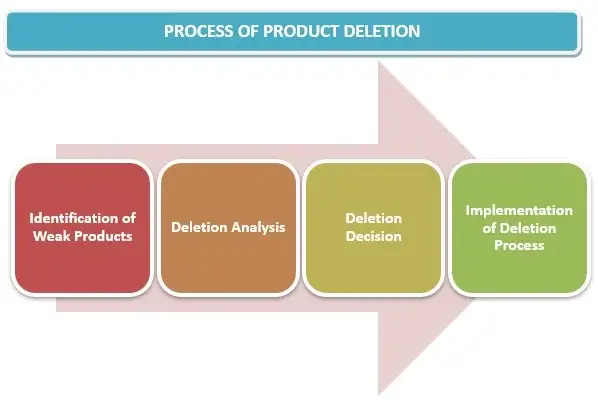
When it comes to communication, clarity is key. Companies should explain why they’re discontinuin’ a product and what it means for their customers. No one likes a mystery!
Communication strategies regarding product discontinuation involve the methods and practices used by companies to inform and engage with stakeholders about the decision to cease the production and sale of a product. These strategies are designed to ensure that customers, employees, and partners understand the reasons for discontinuation, the timeline, and any available alternatives. Effective communication helps mitigate negative reactions and maintains trust and loyalty among stakeholders.
Why Are Communication Strategies Important?
The Importance of Clear Communication During Product Discontinuation
Introduction
Let's talk about why it's super important for companies to talk clearly when they stop making a product. Good talking can make a big difference!
Benefits of Clear Communication
First off, when companies explain things well, it helps people understand what's happening. This is important because:
1. Reduces Upset Feelings: It stops people from getting too upset or surprised.
2. Demonstrates Care: It shows that the company cares about keeping everyone in the loop.
Additional Reasons for Effective Communication
But that's not all! There are more reasons why good talking matters:
- Maintains Reputation: It helps keep the company's good name. When people feel the company is honest, they still trust it.
- Encourages Customer Loyalty: Customers are more likely to stick around. Even if their favorite product is gone, they might try something else from the same company.
Enhancing Customer Experience
Now, here's how good talking can help even more:
1. Showcase Alternatives: It can show customers other cool products they might like. This way, people can find something new to buy.
2. Address Concerns: If anyone has worries, the company can answer questions and help out. This makes people feel cared for.
Positive Outcomes of Good Communication
So, what happens when companies do all this? Well, it's like magic:
- Smoother Transition: The whole process of stopping a product goes more smoothly.
- Trust and Likeability: People still like and trust the company, even with the changes.
- Excitement for New Products: Customers might even get excited about trying new products!
Conclusion
In the end, it's all about keeping everyone happy, even when things change. When companies talk well, it's like they're being a good friend - honest, helpful, and caring. And that's how you keep people coming back for more!
Best Practices
- Best Practice #1: Open and clear communication is key when ending a product. Tell stakeholders early why it's happening, when, and what it means. This builds trust and helps everyone prepare, making negative reactions less likely. Being upfront allows for smoother transitions and maintains good relationships.
- Best Practice #2: Help customers switch to new products when ending an old one. Give them deals, info, and support. Make sure they can ask questions and get help. This keeps them happy and loyal. Good support during changes makes customers feel valued and more likely to stay with your brand.
- Best Practice #3: Set up ways for people to share their thoughts when a product ends. Use surveys, phone lines, or online chats. Listen and act on what you hear. This helps fix problems fast and keeps everyone happy. It makes the change easier and builds good ties with customers.
Learn More
- [How can you effectively discontinue a product? - LinkedIn](https://www.linkedin.com/advice/0/how-can-you-effectively-discontinue-product-y2qxf)
- [Managing Product Discontinuation with Dignity - FasterCapital](https://fastercapital.com/content/Managing-Product-Discontinuation-with-Dignity.html)
- [Product Discontinuation - Adogy](https://www.adogy.com/terms/product-discontinuation/)
X. What Is ... Marketing Opportunities Regarding Discontinued Products?
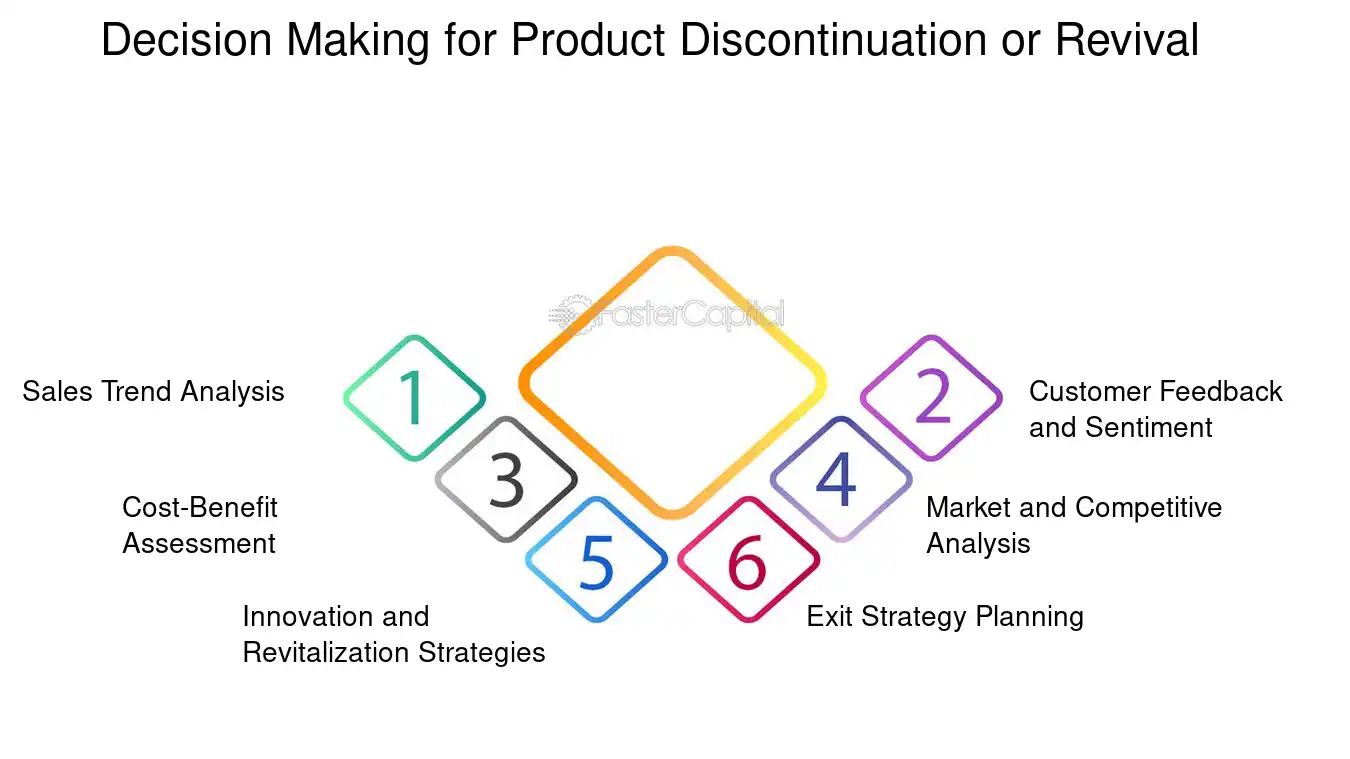
Now, here’s a silver lining: discontinuation can open up new marketing doors! It’s a chance to promote new stuff that fits what customers are lookin’ for.
Marketing opportunities regarding discontinuing products refer to the potential advantages and strategies that businesses can leverage when phasing out a product. While discontinuation is often seen as a challenge, it can also present unique opportunities to re-engage customers, promote alternative products, and refresh a brand's image. By strategically managing the discontinuation process, companies can turn a potentially negative situation into a positive marketing opportunity.
Why Are Marketing Opportunities Important?
The Importance of Finding Opportunities During Product Discontinuation
Introduction
Let's talk about why it's super important for companies to find good chances when they stop making a product. It might sound tricky, but it can actually be really helpful!
Keeping Customers Happy
One, smart companies use this time to keep customers happy. How? Well, they show people other cool stuff they can buy instead. It's like when your favorite ice cream flavor runs out, but the shop tells you about a new one that's just as yummy!
Additional Reasons for Seizing Opportunities
But that's not all! Here are more reasons why this is so important:
1. Maintaining Brand Reputation: It helps the company keep its good name. When they handle things well, people still trust and like them.
2. Promoting New Products: It's a chance to tell everyone about new and exciting things. This can get people really interested in what's coming next.
3. Demonstrating Commitment to Improvement: It shows that the company is always trying to make things better for their customers. This makes people feel special and cared for.
Positive Outcomes of Effective Communication
Now, here's what happens when companies do this right:
- Customers might not feel so sad about losing their favorite product.
- They might get excited to try something new from the same company.
- People might think the company is smart and always changing for the better.
Strategies for Companies
So, how do companies make the most of this time? Here are some cool ideas:
- Sales Promotions: They might have a big sale to say goodbye to the old product.
- **Engaging Communication**: They could send out fun messages telling everyone about new products.
- Customer Feedback: Sometimes, they ask customers what they'd like to see next. It's like asking your friends what game to play!
Conclusion
In the end, it's all about turning a tough situation into something great. When companies look for good chances during this time, everyone wins. Customers get exciting new things, and the company keeps growing and doing well. It's like turning lemons into lemonade - with the right attitude, you can make something sweet out of a sour situation!
Best Practices
- Best Practice #1: First of all, use product discontinuation to spotlight alternatives. Next, create targeted campaigns showcasing their benefits. In addition, offer promotions to encourage trials. Finally, equip sales teams to guide customers through the change. This approach helps maintain customer satisfaction and potentially boosts sales of other products in your line.
- Best Practice #2: Talk to customers when ending a product. Ask what they think through surveys and social media. Use their ideas to shape your messages and new products. This keeps their trust and gives you good info for future plans. Staying close to customers helps your business grow.
- Best Practice #3: Use product endings to update your brand's message. Align it with your current goals. Make new ads that show you care about customers and new ideas. Tell people why you're stopping the product in a way that shows you value quality. This keeps your brand fresh and trusted.
Learn More
- [Product Discontinuation - Adogy](https://www.adogy.com/terms/product-discontinuation/)
- [How to Communicate a Product Discontinuation to Customers | CO](https://www.uschamber.com/co/grow/customers/communicating-product-discontinuation-to-customers)
- [Why do Companies Discontinue Products? - Factors Revealed](https://www.selfmoneycare.com/post/why-do-companies-discontinue-products)
XI. What Is ... Handling Backlash and Negative Publicity Regarding Discontinued Products?

If folks get upset, companies gotta be ready to handle it. A little transparency goes a long way in keepin’ the brand’s reputation shiny and bright.
Handling backlash and negative publicity regarding discontinuing products involves managing the adverse reactions and criticisms that may arise when a product is phased out. This process requires strategic communication and public relations efforts to address consumer concerns, maintain brand reputation, and minimize negative impacts on customer loyalty and sales.
Why Is Handling Backlash and Negative Publicity Important?
When a product is discontinued, managing the situation effectively is crucial for companies. Here's why it matters and how to handle it right.
Maintaining Brand Reputation
Handling discontinuing products well helps maintain a company's brand image and reputation. It's like keeping your friends even when mistakes happen. Effective management ensures that the brand continues to be seen positively.
Customer Reactions to Product Discontinuation
When a beloved product disappears, customers may react in several ways:
- Emotional Responses: Customers might feel sad or angry.
- Negative Feedback: They could leave negative reviews on social media platforms.
- Influencing Others: This feedback might sway others' opinions, damaging the brand's reputation.
Strategies for Improvement
Smart companies employ strategies to manage these reactions effectively:
- Immediate Communication: They provide prompt responses, akin to quickly apologizing when bumping into someone.
- Clear Explanations: Offering transparent reasons for the discontinuation helps customers understand the change.
- Offering Alternatives: Suggesting other products can ease the transition for customers.
Importance of Effective Communication
Effective communication is key for several reasons:
- Building Trust: It maintains customer trust, which is vital for long-term relationships.
- Reducing Upset: Good communication can mitigate negative feelings.
- Turning Negatives into Positives: Sometimes, it can even improve customer perceptions, turning challenges into opportunities.
Brand and Reputation Management
Managing a brand's reputation involves more than just addressing immediate concerns. Companies must engage in ongoing brand reputation monitoring to prevent issues from escalating. Effective brand reputation crisis management can turn potential disasters into opportunities for growth.
Brand Reputation Analysis
Conducting thorough brand reputation analysis helps companies understand their standing and prevents them from being placed on customer's bad brand reputation examples lists. This proactive approach safeguards the brand's image and reputation.
Conclusion
Handling product discontinuation well transforms a challenging situation into an opportunity to demonstrate care and commitment to customers. When done right, it's like giving a reassuring hug to all customers.
Final Thoughts
Change can be difficult, but effective management finds the silver lining in every cloud. Companies that handle discontinuations with care may even enhance their reputation. So, next time a product is discontinued, observe how the company responds—you might witness some clever and compassionate strategies that leave everyone feeling better.
Best Practices
- Best Practice #1: First, respond quickly to backlash. Next, be open about why you're stopping the product. Meanwhile, listen to customer concerns. In addition, explain your reasons clearly. Finally, show that you value their opinions. This approach builds trust and proves your commitment to customers during tough changes[6][7].
- Best Practice #2: Listen closely to what customers say when ending a product. Show you care about their feelings. This helps calm anger and starts good talks. When you understand their worries, it shows you value them. Be ready to make changes if needed. This builds stronger ties with your customers[6][7].
- Best Practice #3: Help customers find new options when a product ends. Suggest similar items or give deals on replacements. Offer extra support to make the switch easy. This keeps customers happy and loyal to your brand. By guiding them to good alternatives, you can keep their business and trust[5][7].
Learn More
- [Managing Product Discontinuation with Dignity - FasterCapital](https://fastercapital.com/content/Managing-Product-Discontinuation-with-Dignity.html)
- [Defending Your Brand: Expert Strategies for Handling Negative Press](https://otterpr.com/handling-negative-press/)
- [How to Communicate a Product Discontinuation to Customers | CO](https://www.uschamber.com/co/grow/customers/communicating-product-discontinuation-to-customers)
XII. What Is ... Inventory Management Post Product Discontinuation?
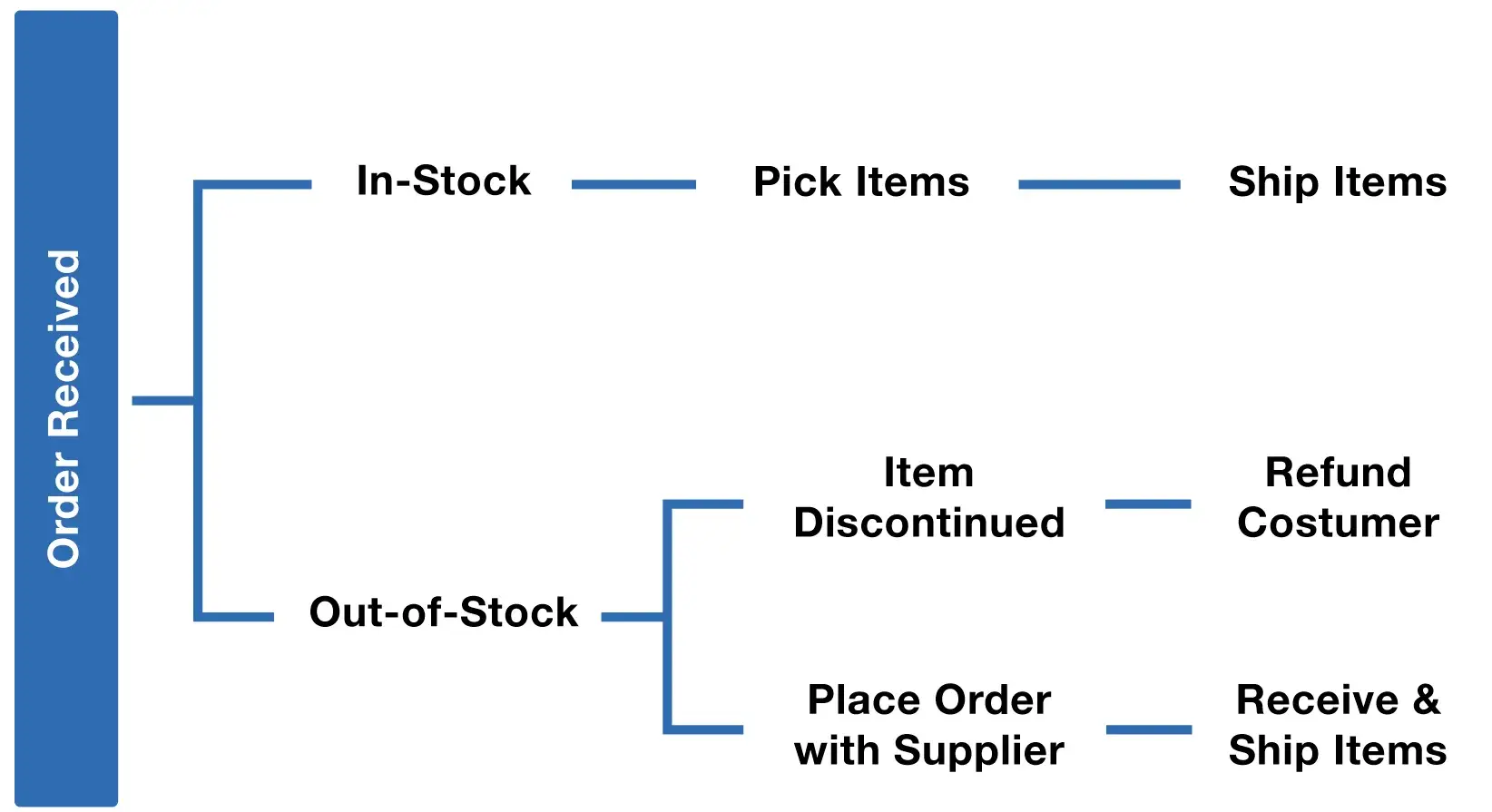
After a product’s been discontinued, companies need to manage that leftover inventory like a pro. Ain’t nobody wantin’ to be stuck with a warehouse full of dust collectors!
Inventory management post product discontinuation involves the strategic handling of remaining stock after a product has been phased out. This process includes decisions about how to efficiently clear out existing inventory, minimize financial losses, and make room for new products. Effective inventory management is crucial to ensure a smooth transition and maintain operational efficiency during and after the discontinuation process.
Why Is Inventory Management Important?
The Importance of Handling Leftover Products
Introduction
Let's talk about why it's super important to handle leftover stuff when a company stops making a product. It's a big deal, and here's why:
Financial Benefits
One, good handling of leftover items helps the company save money. Think of it like cleaning out your toy box - you don't want old toys taking up space for new ones!
Smart Strategies for Leftover Items
Now, here's what smart companies do:
1. Quick Sales: They try to sell the leftover stuff quickly. It's like having a big yard sale for all the extra things.
2. Creative Solutions: If they can't sell it all, they find other clever ways to use it or get rid of it.
3. Cost Management: This helps them avoid paying for storage, which can cost a lot of money over time.
Additional Benefits of Handling Leftovers
But that's not all! There are more cool reasons to handle leftovers well:
- Funding New Products: It helps the company have more money to spend on new, exciting products.
- Operational Efficiency: It keeps things moving smoothly in the company, like a well-oiled machine.
- Adaptability: It makes sure the company can quickly change what they're making based on what people want to buy.
Importance of Efficient Management
Here's why all of this matters so much:
1. Resource Allocation: The company can use its money for fun new ideas instead of storing old stuff.
2. Product Development: It's easier to make new products when you're not worried about old ones.
3. Customer Excitement: Customers get excited about new things, which is great for the company!
Conclusion
In the end, good handling of leftovers is like giving the company a fresh start. It's exciting and helps everyone move forward to bigger and better things!
Final Thoughts
Remember, just like cleaning your room can make you feel ready for a new day, handling leftover products well can make a company ready for new adventures in selling cool stuff to people like you.
Best Practices
- Best Practice #1: First of all, do a full inventory check. Next, see how much stock is left and its condition. During this process, decide which items can sell at full price. Afterward, figure out which need discounts. Finally, determine what to write off. This careful look helps you make smart choices about clearing stock and saving money.
- Best Practice #2: Clear out old stock fast with smart sales. Try deals, bundles, or season-based offers to get people buying. Tell folks about these sales to move items quickly. This helps you get back some money from products you're stopping. Good sales plans can turn leftover stock into cash.
- Best Practice #3: Look for new ways to get rid of leftover items you can't sell normally. Give some to charity or recycle them. Try selling to other markets too. This cuts down on waste and storage costs. It might even save on taxes or make your company look good. These smart moves help deal with extra stock.
Learn More
- [Obsolete Inventory: Everything You Need to Know](https://cashflowinventory.com/blog/obsolete-inventory/)
- [How to Communicate a Product Discontinuation to Customers](https://www.uschamber.com/co/grow/customers/communicating-product-discontinuation-to-customers)
- [Managing Product Discontinuation with Dignity - FasterCapital](https://fastercapital.com/content/Managing-Product-Discontinuation-with-Dignity.html)
XIII. What Is ... Supplier and Distribution Challenges Regarding Discontinued Products?
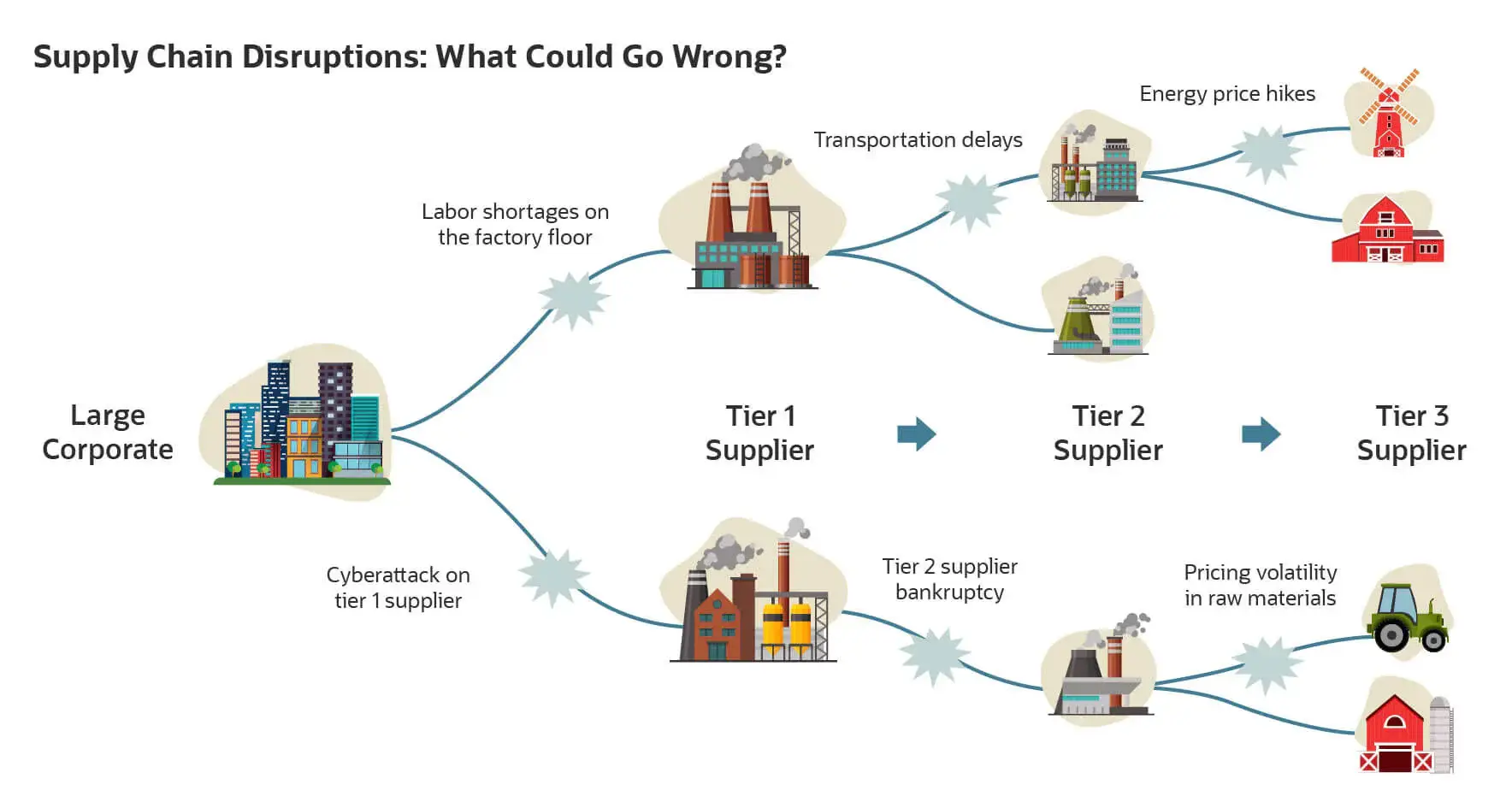
Discontinuation can throw a wrench in the works with suppliers and distribution. Gotta navigate that carefully to keep things runnin’ smooth.
Supplier and distribution challenges regarding discontinuing products involve the logistical and operational difficulties that arise when a product is removed from the market. These challenges include managing relationships with suppliers, adjusting distribution networks, and handling inventory effectively. The discontinuation process can disrupt established supply chains and require significant adjustments to ensure that remaining stock is cleared efficiently and that suppliers and distributors are aligned with the new product strategy.
Why Are Supplier and Distribution Challenges Important?
The Importance of Collaborating with Partners
Introduction
Let's talk about why it's super important for companies to work well with the people who make and sell their stuff. It's a big deal, especially when they stop making a product!
Financial Benefits
First off, working well with these partners helps the company save money. It's like having good friends who help you out when you need it.
Key Reasons for Collaboration
Now, here's why this is so important:
1. Cost Efficiency: It helps the company not waste money on stuff that won't sell. That's like not buying too much food that might go bad.
2. Facilitating New Products: It makes it easier to start selling new, cool things. Think of it as making room for new toys in your toy box.
3. Teamwork: It keeps everyone happy and working together, which is great for future projects.
Additional Benefits of Good Partnerships
But wait, there's more! Here are some other cool things that happen:
- Quick Adaptation: The company can change what they're making quickly if people want different things. It's like being able to switch games fast when your friends want to play something new.
- Stock Management: It helps make sure there's always enough stuff to sell. No one likes it when their favorite snack is out of stock!
- Learning Opportunities: The company can learn about new ideas from their partners. It's like getting tips from your friends on how to beat a tough video game level.
Overall Importance
So, why does all this matter? Well, when a company works well with its partners:
1. Easier Adaptation: They can handle big changes more easily.
2. Faster Product Development: They're ready to make new, exciting products faster.
3. Customer Satisfaction: They keep their customers happy by always having cool stuff to sell.
Conclusion
In the end, it's all about teamwork! When companies and their partners work together well, everyone wins. It's like having a great team in a sport - when everyone plays well together, you're more likely to win the game!
Final Thoughts
Remember, good teamwork makes everything better, even when things are changing. It's how companies keep bringing us awesome new stuff to enjoy.
Best Practices
- Best Practice #1: First, talk openly with suppliers and distributors about ending the product. Next, explain why you're doing it and when. During this process, discuss any changes in what you'll need from them. Meanwhile, make sure everyone understands your company's plans. Finally, keep the lines of communication open to manage expectations and maintain good relationships.
- Best Practice #2: Make a clear plan to handle leftover stock when ending a product. Think about sales, moving items, or using them in new ways. Look at how this affects money and try to cut waste and storage costs. A good plan helps use resources wisely and keeps cash flowing during changes.
- Best Practice #3: Look at how ending a product changes your delivery system. Change deals if needed. Find new partners to help move goods. Make shipping work better for other items you sell. Keep your system ready to change. This helps your business run smoothly and saves money when products change.
Learn More
- [7 Common Challenges Facing Distributors and Wholesalers](https://www.kmco.com/insights/7-common-challenges-facing-distributors-and-wholesalers/)
- [Managing Product Discontinuation with Dignity - FasterCapital](https://fastercapital.com/content/Managing-Product-Discontinuation-with-Dignity.html)
- [How can you effectively discontinue a product? - LinkedIn](https://www.linkedin.com/advice/0/how-can-you-effectively-discontinue-product-y2qxf)
IXV. What Is ... Phasing Out vs. Immediate Discontinuation Regarding Product Discontinuation?
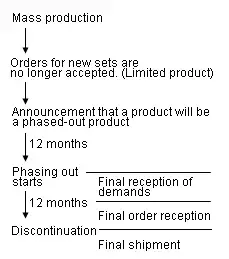
Decidin’ whether to phase out a product or yank it off the shelves right away is a big deal. Each way has its pros and cons, so companies gotta weigh their options.
Phasing out vs. immediate discontinuation refers to the two primary strategies companies can employ when deciding to cease the production and sale of a product. Phasing out involves gradually reducing the availability and support for a product over time, allowing customers and the company to adjust to the change.
Immediate discontinuation, on the other hand, involves abruptly stopping production and sales, often with little warning. Each approach has its own set of operational considerations and impacts on customers, suppliers, and distribution networks.
Why Is Phasing Out vs. Immediate Discontinuation Important?
The Decision to Stop Making a Product
Introduction
Let's talk about how companies decide to stop making a product. They have two main choices: do it slowly or do it right away. This decision is super important! Here's why:
Choosing a Slow Discontinuation
Number one, if they do it slowly:
1. Customer Transition: Customers have time to find new things they like. It's like when your favorite TV show warns you it's ending soon.
2. Selling Off Inventory: The company can sell off what's left without rushing. Think of it as finishing all your Halloween candy before Christmas.
3. Preparation for Change: Everyone has time to get ready for the change. It's less of a shock!
Choosing an Immediate Discontinuation
But sometimes, they might need to stop right away:
1. Safety Concerns: Maybe there's a safety problem with the product. That's like finding out a toy is dangerous - you'd want to stop playing with it immediately!
2. Financial Losses: Or maybe they're losing too much money. It's like stopping a game that's no fun anymore.
Importance of the Decision
Now, here's why this choice matters so much:
- Customer Sentiment: It can make customers happy or sad. Happy customers come back!
- Brand Perception: It affects how people think about the company. You want people to think you're nice and fair, right?
- Operational Smoothness: It changes how smoothly the company runs. Smooth is good!
Considerations for Companies
So, what should companies do? They need to think hard about:
1. Customer Best Interests: What's best for their customers?
2. Business Needs: What's best for their business?
3. Market Conditions: What's happening in the world around them?
Conclusion
In the end, making the right choice is like choosing the best route for a road trip. Pick the wrong way, and you might hit traffic jams. Pick the right way, and everyone has a great time!
Final Thoughts
Remember, whether it's slow or fast, the goal is to make the change as easy as possible for everyone. It's all about being smart and kind at the same time.
Best Practices
- Best Practice #1: First, look at how ending a product affects everyone involved. Next, think about customers who rely on it. Meanwhile, check supplier deals. In addition, consider how it changes shipping. During this process, figure out the best way to handle the change. Finally, use this info to prepare everyone for what's coming. This careful planning helps smooth the transition.
- Best Practice #2: Tell everyone about ending a product as soon as you can. If you're doing it slowly, give a clear timeline and keep people updated. If you're stopping it right away, explain why and what other options they have. Good talks help keep customers and partners happy during big changes.
- Best Practice #3: Make a smart plan to handle leftover items and use your resources well when ending a product. If you're stopping it slowly, cut down stock bit by bit while keeping customers happy. If you're ending it fast, sell off items quickly and move your resources around. This helps save money and keeps your business running smoothly.
Learn More
- [How to Communicate a Product Discontinuation to Customers | CO](https://www.uschamber.com/co/grow/customers/communicating-product-discontinuation-to-customers)
- [Managing Product Discontinuation with Dignity - FasterCapital](https://fastercapital.com/content/Managing-Product-Discontinuation-with-Dignity.html)
- [How can you effectively discontinue a product? - LinkedIn](https://www.linkedin.com/advice/0/how-can-you-effectively-discontinue-product-y2qxf)
XV. What Is ... Legal and Ethical Considerations Regarding Discontinuing Products?

Don’t forget about the legal stuff! Companies need to play by the rules and act responsibly, both to their customers and the environment.
Legal and ethical considerations regarding discontinuing products involve the obligations and standards that companies must adhere to when ceasing the production and sale of a product. This includes compliance with legal requirements, such as consumer protection laws and contractual obligations, as well as ethical standards that ensure transparency, fairness, and respect for all stakeholders affected by the discontinuation.
Why Are Legal and Ethical Considerations Important?
The Importance of Legal and Ethical Considerations in Product Discontinuation
Introduction
Let's talk about why it's super important for companies to think about the law and being good when they stop making a product. It's a big deal, and here's why:
Legal Compliance
Firstly, following the law helps companies avoid big problems. Think of it like following the rules in a game - if you don't, you might get in trouble!
Key Legal and Ethical Points
Here are some key things to remember:
1. Avoiding Lawsuits: Companies need to follow the law to avoid lawsuits. It's like not wanting to get a ticket for speeding.
2. Building Trust: They also need to be good and fair to keep people trusting them. It's like being a good friend - you want people to like and trust you.
Importance of Ethical Behavior
Now, here's why being good and fair is so important:
- Maintaining Reputation: It helps companies keep their good name. You want people to think you're nice and reliable, right?
- Stakeholder Satisfaction: It makes customers, workers, and partners happy. Happy people are more likely to stick around!
- Corporate Social Responsibility: It shows that the company cares about doing the right thing. This is important for being a good business and a good member of society.
Benefits of Ethical Discontinuation
So, what happens when companies do this right? Well, it's like getting a gold star for being good:
1. Legal Protection: They avoid big legal problems.
2. Stakeholder Loyalty: They keep their customers and partners happy.
3. Positive Image: They show everyone that they're responsible and care about doing the right thing.
Conclusion
In the end, it's all about being a good business and a good friend to everyone involved. When companies do this, they're more likely to succeed and be liked by everyone!
Final Thoughts
Remember, being good and fair is like playing by the rules and being kind to others. It's how companies build strong, long-lasting relationships and do well in the long run.
Best Practices
- Best Practice #1: First, check all legal rules before stopping a product. Next, look at consumer protection laws. Meanwhile, review warranties and contracts. During this process, talk to legal experts. Afterward, make sure you're following all regulations. In addition, avoid breaking any agreements. Finally, this careful approach helps prevent legal problems and keeps your company safe during the change.
- Best Practice #2: Be open and honest when ending a product. Tell customers, workers, and partners why it's happening and when. Let them know about other options or help you can give. Clear talks build trust and show you care. This makes everyone feel respected and keeps them in the loop.
- Best Practice #3: Think about how ending a product affects everyone. Help customers find new options. Support workers through changes. Work with suppliers to handle shifts. By caring for all involved, you keep good ties and do the right thing. This approach shows you value people, not just profits.
Learn More
- [Managing Product Discontinuation with Dignity - FasterCapital](https://fastercapital.com/content/Managing-Product-Discontinuation-with-Dignity.html)
- [What are the key factors to consider when discontinuing a product in decline? - LinkedIn](https://www.linkedin.com/advice/1/what-key-factors-consider-when-discontinuing-product-decline)
- [Ethical and Legal Concerns Associated With Withdrawing Mechanical Circulatory Support - NCBI](https://www.ncbi.nlm.nih.gov/pmc/articles/PMC9360408/)
XVI. What Is ... Environmental and Sustainability Considerations Regarding Discontinued Products?
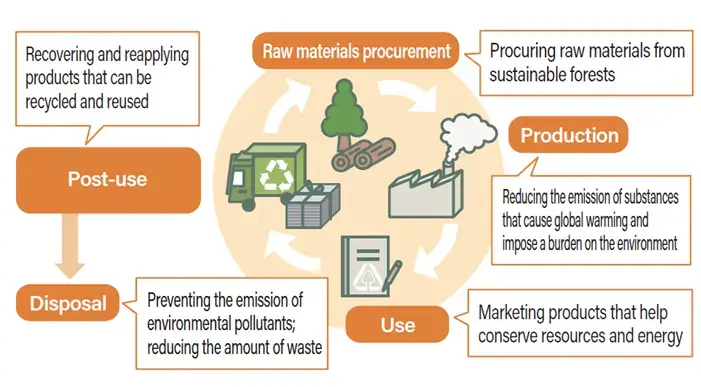
These days, folks care about the planet. Companies should think about how their discontinued product decisions impact the environment and do their part to keep it green.
Environmental and sustainability considerations regarding product discontinuation involve evaluating the ecological impact of phasing out a product and implementing practices that minimize environmental harm. This includes assessing the product's lifecycle, managing waste responsibly, and exploring opportunities for recycling and reusing materials. Companies aim to align their discontinuation strategies with broader sustainability goals, reducing their carbon footprint and promoting a circular economy.
Why Are Environmental and Sustainability Considerations Important?
Environmental Responsibility in Product Discontinuation
Introduction
Let's talk about why it's super important for companies to think about the environment when they stop making a product. It's a big deal, and here's why:
Corporate Social Responsibility
One, taking care of the Earth shows that a company really cares about doing the right thing. It's like being a good neighbor - you want to keep your yard clean and nice for everyone!
Key Environmental Considerations
Here are some key things to remember:
1. Environmental Impact Assessment: Companies need to think about how their actions affect the planet. It's like thinking about how your actions might affect your friends and family.
2. Regulatory Compliance: They need to follow the rules to keep the environment safe. It's like following the rules of a game to make sure everyone has fun and stays safe.
Importance of Environmental Stewardship
Now, here's why being good to the Earth is so important:
- Reputation Management: It helps companies look good to everyone. You want people to think you're responsible and care about the planet, right?
- Cost Savings: It can even save them money. Think of it like turning off the lights when you're not using them - it saves energy and money!
- Global Climate Action: It's a big part of helping the whole world fight climate change. It's like being part of a big team working together to make the Earth a better place.
Benefits of Environmental Responsibility
So, what happens when companies do this right? Well, it's like getting a big thumbs up from everyone:
1. Environmental Preservation: They help keep the Earth clean and healthy.
2. Resource Efficiency: They save money by being smart about resources.
3. Ethical Business Practices: They show everyone that they're committed to doing the right thing.
Conclusion
In the end, it's all about being a good business and a good friend to the Earth. When companies do this, they're more likely to succeed and be liked by everyone!
Final Thoughts
Remember, taking care of the Earth is like taking care of your home. You want to keep it clean and nice for everyone who lives there. Companies that do this are helping make the world a better place for all of us.
Best Practices
- Best Practice #1: First, do a full check of how a product affects the environment from start to finish. Next, find ways to make it greener, like using better materials. Meanwhile, look at how it's made and see if that can be improved. Afterward, use this info to plan a more eco-friendly way to end the product. Finally, this approach helps make smarter, earth-friendly choices.
- Best Practice #2: Set up ways to reuse or recycle old products. Try programs where people bring back items. Team up with recycling plants. Make products easy to take apart and reuse parts. This cuts waste and saves resources. It helps create a loop where old stuff becomes new, which is good for the earth.
- Best Practice #3: Tell people how you're being green when ending a product. Share what you're doing to help the earth. This makes your brand look good and builds trust. Get customers and partners excited about being eco-friendly too. Working together on green goals helps everyone in the business chain make better choices for the planet.
Learn More
- [Managing Product Discontinuation with Dignity - FasterCapital](https://fastercapital.com/content/Managing-Product-Discontinuation-with-Dignity.html)
- [Product and Product Life Cycle: Maximising Sustainability - EcoHedge](https://ecohedge.com/blog/product-and-product-life-cycle-maximizing-sustainability/)
- [Environmental implications of planned obsolescence and product lifecycle](https://www.tandfonline.com/doi/full/10.1080/19397038.2015.1099757)
XVII. What Is ... Case Studies of Successfully Discontinued Products?
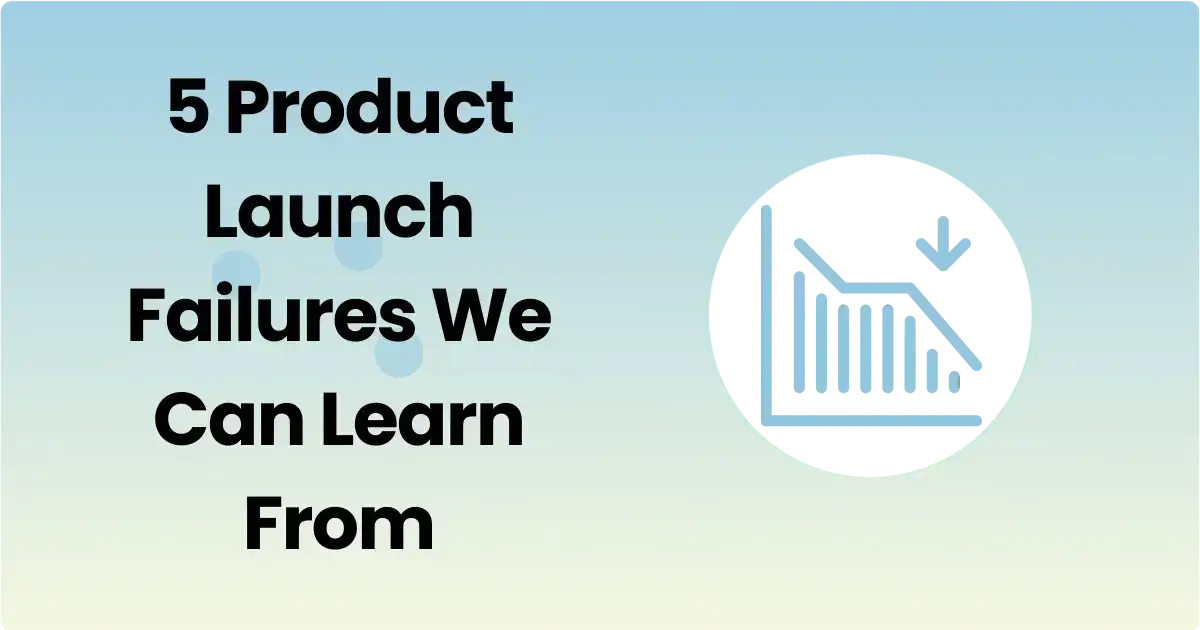
Lookin’ at successful case studies can be a real eye-opener. Learnin’ what worked can help other businesses when they face similar choices. Well, let me tell ya, the Gastrorejuvenator crowdfunding campaign (Join below) is like a second chance for a product that got the boot from not one, but two big ol' companies—GNC and Twinlab!
Ain't that a hoot? It's like trying to bring back your favorite pair of jeans after they went outta style! So, if you're lookin' to get in on the action and support something that’s been through the wringer, this is your shot! Get ready to rejuvenate yourself and show those companies they might've made a mistake! Git 'er done!
Case studies of successful product discontinuations examine instances where companies have effectively managed the process of phasing out a product. These case studies highlight the strategies and practices that led to a smooth transition, minimized negative impacts, and even leveraged the discontinuation as an opportunity for growth or innovation. By analyzing these examples, businesses can learn valuable lessons on how to approach product discontinuation in a way that benefits both the company and its stakeholders.
Why Are Case Studies of Successful Product Discontinuations Important?
The Importance of Learning from Others in Product Discontinuation
Introduction
Let's talk about why it's super helpful for companies to learn from others who have done a great job at stopping a product. It's like learning from a wise friend!
Gaining Valuable Insights
First off, when companies look at how others have handled this, they can get some really cool ideas. It's like getting tips from a pro on how to beat a tough level in a video game.
Key Lessons to Learn
Here are some key things they can learn:
1. Smooth Transitions: How to make the change go smoothly. It's like finding the best route for a road trip.
2. Customer Retention: How to keep customers happy and coming back. Think of it like keeping your friends even when you have to cancel plans.
3. Reputation Management: How to protect their good name. It's like making sure people still think you're nice even when you have to do something tough.
Additional Learning Opportunities
But wait, there's more! Companies can also learn:
- Turning Challenges into Opportunities: How to turn a tricky situation into something good. It's like turning lemons into lemonade!
- Resource Optimization: How to use their time and money for better things. Think of it like trading in an old toy for a new, cooler one.
- Business Improvement: How to make their whole business even better. It's like leveling up in a game!
Importance of Learning from Others
So, why is all this so important? Well, when companies learn from others:
1. Mistake Avoidance: They can avoid making mistakes. It's like learning from your sibling's mistakes so you don't repeat them.
2. Time and Money Savings: They can save time and money. It's like getting a cheat code to skip the hard parts!
3. Enhanced Creativity: They can come up with even better ideas. Think of it like getting inspiration from your friends to create an awesome art project.
Conclusion
In the end, it's all about being smart and learning from others. When companies do this, they're more likely to handle big changes like a pro!
Final Thoughts
Remember, learning from others is like having a wise guide on a journey. They can show you the best paths, help you avoid danger, and make the whole trip more fun and successful. Companies that do this are setting themselves up for a great adventure!
Best Practices
- Best Practice #1: First of all, plan carefully when ending a product. Next, talk clearly with everyone involved. For example, when IBM stopped making its first quantum computer, they shared a detailed plan for future services. This reassured investors and customers. Finally, good communication helps people understand why you're making the change and what to expect.
- Best Practice #2: Give customers new options and help when ending a product. Microsoft did this well when stopping Windows 7 support. They offered lots of resources to help users switch to newer systems. This kept people happy and loyal. By meeting customer needs during changes, you avoid anger and keep business strong.
- Best Practice #3: Ending a product can spark new ideas. Apple stopped making iPods to focus on iPhones and Apple Watches. This move matched what people wanted and new tech trends. By putting efforts into fresh products, companies can grow and succeed over time. Smart changes like this help businesses stay ahead.
Learn More
- [Managing Product Discontinuation with Dignity - FasterCapital](https://fastercapital.com/content/Managing-Product-Discontinuation-with-Dignity.html)
- [Practice of Product Discontinuation | Sequent Blog](https://sequentlearning.com/insights/the-practice-of-product-discontinuation/)
- [Product Discontinuation - Adogy](https://www.adogy.com/terms/product-discontinuation/)
XVIII. What Is ... Lessons from Failed Discontinuations Regarding Discontinued Products?

And let’s not ignore the flops! Studying failed discontinuations can show what not to do. Avoidin’ those pitfalls is just smart business!
Lessons from failed discontinuations regarding product discontinuations involve analyzing cases where companies have not successfully managed the process of phasing out a product. These lessons highlight the challenges and pitfalls that can occur when discontinuation is not handled effectively, such as negative customer reactions, loss of brand reputation, and financial setbacks. By examining these failures, businesses can learn how to avoid similar mistakes and improve their discontinuation strategies.
Why Are Lessons from Failed Discontinuations Important?
The Importance of Learning from Past Product Discontinuations
Introduction
Let's talk about why it's super important for companies to learn from times when stopping a product didn't go well. It's like learning from your own mistakes!
Learning from Others' Mistakes
When companies look at what went wrong for others, they can see what to avoid. It's like learning from your friend's mistake so you don't do the same thing.
Key Lessons to Learn
Here are some key things they can learn:
1. Understanding Customer Reactions: What can make customers upset. Think of it like learning what makes your friends mad so you don't do those things.
2. Maintaining Reputation: How to keep their good name even when things are tough. It's like learning how to say sorry and make things right when you mess up.
3. Smooth Transitions: How to make the change go more smoothly next time. It's like practicing a new skill until you get it right.
Additional Learning Opportunities
But that's not all! Companies can also learn:
- Making Better Choices: How to make better choices. It's like learning from your mistakes to make smarter decisions in the future.
- Improving Communication: How to talk to everyone involved in a better way. Think of it like learning how to explain things more clearly to your friends.
- Achieving Better Outcomes: How to have a better result the next time they have to stop a product. It's like using what you learned to ace a test!
Importance of Learning from Mistakes
So, why is all this so important? Well, when companies learn from past mistakes:
1. Avoiding Customer Discontent: They can avoid making customers unhappy. Happy customers are like happy friends - they stick around!
2. Protecting Reputation: They can protect their reputation. It's like making sure people still think you're nice even after a tough situation.
3. Improving Future Results: They can have a better outcome the next time. Think of it like using what you learned to win a game!
Conclusion
In the end, it's all about learning and growing. When companies do this, they're more likely to handle big changes like a champ!
As an example, some companies have been asking themselves the question, "How were their 90's products discontinued?" In the realm of business strategy development, understanding this offers valuable insights into crafting new effective business strategies. Companies often face the challenge of phasing out products that once resonated with their target market but no longer align with evolving consumer preferences.
As seen in business strategy examples like the discontinuation of iconic 90's products, the key lies in identifying shifts within the target audience and adapting marketing strategies accordingly. By analyzing how these products exited the market, businesses can refine their approach to ensure that their offerings remain relevant and appealing.
This involves not only understanding the reasons behind the discontinuation but also leveraging nostalgia and other emotional connections to engage consumers effectively. Ultimately, successful business strategy development hinges on a deep understanding of the target market's needs and desires, allowing companies to pivot and innovate while maintaining a strong brand presence.
Final Thoughts
Remember, learning from mistakes is like having a second chance to do things better. It's not always easy, but it's how we grow and improve. Companies that do this are setting themselves up for success in the long run.
Best Practices
- Best Practice #1: First of all, do a full market study before ending a product. Next, look at what customers want and what rivals offer. Meanwhile, find possible replacement products. During this process, spot risks and plan how to handle them. Finally, this careful approach helps avoid angry customers and losing market share. Skipping this step can lead to unexpected problems[1][5].
- Best Practice #2: Be open with everyone when ending a product. Tell customers, workers, and partners why it's happening. Share info about other options or help available. Clear talks prevent confusion and keep your brand's good name. Hiding details can upset people and hurt your business image[2][4].
- Best Practice #3: Plan for problems when ending a product. Think about how to handle leftover stock, answer customer questions, and keep supplies moving. A good backup plan stops work hiccups and money loss. Being ready for issues helps your business run smoothly during big changes[3][6].
Learn More
- [Understanding the short-term impact of product discontinuations on consumer behavior](/content/files/server/api/core/bitstreams/ba09240b-883b-4613-8c71-bc26255397b6/content.pdf)
- [Managing Product Discontinuation with Dignity - FasterCapital](https://fastercapital.com/content/Managing-Product-Discontinuation-with-Dignity.html)
- [How can you effectively discontinue a product? - LinkedIn](https://www.linkedin.com/advice/0/how-can-you-effectively-discontinue-product-y2qxf)
IXX. What Is ... Reintroducing Discontinued Products?

Sometimes, a product can make a comeback! Companies should think about bringin’ back discontinued items if the market’s right. It’s like a second chance at love!
Reintroducing discontinued products involves bringing back products that were previously removed from the market. This can occur due to renewed consumer interest, changes in market conditions, or strategic shifts within a company. Reintroduction can revitalize a brand, meet consumer demand, and leverage nostalgia or a loyal customer base.
Why Is Reintroducing Discontinued Products Important?
The Benefits of Bringing Back Old Products
Introduction
Let's talk about why bringing back old products can be a great idea for companies. It's like revisiting an old favorite!
Tapping into Nostalgia
First, when companies bring back a discontinued product, they can tap into something special: brand equity and consumer nostalgia. Think of it like rewatching your favorite childhood movie - it brings back happy memories!
Key Benefits of Reintroducing Products
Here are some key benefits:
1. Renewed Interest: People get excited again about the product. It's like when your favorite TV show comes back for a new season!
2. Increased Sales: More people want to buy it, which means more money for the company. It's like having a big sale on something everyone loves.
3. Cost-Effective Development: Companies don't have to spend time and money creating something entirely new. It's like dusting off an old toy instead of buying a new one.
Additional Advantages
But that's not all! Bringing back old products can also:
- Strengthen Customer Loyalty: When companies listen to what customers want, it shows they care. This makes customers happy and loyal.
- Leverage Past Successes: By bringing back something that worked well before, companies can build on what they already know works. It's like using a recipe that you know everyone loves.
Importance of Reintroducing Products
So, why is this so important? Well, it's simple:
1. Respond to Market Changes: Companies can quickly adapt to what people want without starting from scratch.
2. Show Responsiveness: It shows customers that the company is listening and cares about their desires.
3. Enhance Current Offerings: By bringing back old favorites, companies can make their current products even better.
Conclusion
In the end, bringing back discontinued products is like giving customers a blast from the past. It's a way for companies to show they care about what people want and to make money without starting over.
Final Thoughts
Remember, revisiting old favorites can be a win-win for everyone. Companies get to reuse what they know works, and customers get to enjoy something they love again.
Best Practices
- Best Practice #1: First of all, do thorough market research before bringing back a product. Next, check what consumers want now and how the market looks. Meanwhile, understand buyer likes and possible demand. Afterward, use this info to make sure the product fits current needs. Finally, spot any updates or improvements needed. This careful approach helps ensure success when relaunching.
- Best Practice #2: Use fond memories and fan love when bringing back a product. Show its history and why it matters. Tell stories about its past success to connect with people's feelings. Talk to loyal fans to build excitement. This approach taps into emotions and gets folks eager for the product's return.
- Best Practice #3: Improve the old product when bringing it back. Keep what people loved, but add new features. Make it more eco-friendly or use new tech. This mix of old and new can win over fans and attract fresh customers. Smart updates help the product fit today's needs while keeping its classic appeal.
Learn More
- [Managing Product Discontinuation with Dignity - FasterCapital](https://fastercapital.com/content/Managing-Product-Discontinuation-with-Dignity.html)
- [Why do Companies Discontinue Products? - Factors Revealed](https://www.selfmoneycare.com/post/why-do-companies-discontinue-products)
- [Understanding the short-term impact of product discontinuations on consumer behavior](/content/files/server/api/core/bitstreams/ba09240b-883b-4613-8c71-bc26255397b6/content.pdf)
XX. What Is ... Reintroducing Discontinued Products Regarding Employee and Internal Dynamics?

Discontinued products affect employees too, folks. Clear communication is key to keepin’ spirits high and makin’ sure everyone’s on the same page.
Reintroducing discontinued products involves bringing back products that were previously removed from the market, and this process can have significant implications for employee and internal dynamics.
It requires coordination across various departments, including marketing, production, and sales, and can impact employee morale, resource allocation, and strategic alignment within the company. Understanding how to manage these internal dynamics is crucial for a successful reintroduction.
Why Is Reintroducing Discontinued Products Important?
The Benefits of Bringing Back Old Products
Introduction
Let's talk about why bringing back old products can be a great idea for companies. It's like revisiting an old favorite!
Tapping into Nostalgia
First, when companies bring back a discontinued product, they can tap into something special: brand equity and consumer nostalgia. Think of it like rewatching your favorite childhood movie - it brings back happy memories!
Key Benefits of Reintroducing Products
Here are some key benefits:
1. Renewed Interest: People get excited again about the product. It's like when your favorite TV show comes back for a new season!
2. Increased Sales: More people want to buy it, which means more money for the company. It's like having a big sale on something everyone loves.
3. Cost-Effective Development: Companies don't have to spend time and money creating something entirely new. It's like dusting off an old toy instead of buying a new one.
Additional Advantages
But that's not all! Bringing back old products can also:
- Strengthen Customer Loyalty: When companies listen to what customers want, it shows they care. This makes customers happy and loyal.
- Leverage Past Successes: By bringing back something that worked well before, companies can build on what they already know works. It's like using a recipe that you know everyone loves.
Importance of Reintroducing Products
So, why is this so important? Well, it's simple:
1. Respond to Market Changes: Companies can quickly adapt to what people want without starting from scratch.
2. Show Responsiveness: It shows customers that the company is listening and cares about their desires.
3. Enhance Current Offerings: By bringing back old favorites, companies can make their current products even better.
Conclusion
In the end, bringing back discontinued products is like giving customers a blast from the past. It's a way for companies to show they care about what people want and to make money without starting over.
Final Thoughts
Remember, revisiting old favorites can be a win-win for everyone. Companies get to reuse what they know works, and customers get to enjoy something they love again.
Best Practices
- Best Practice #1: First of all, promote teamwork across departments when bringing back a product. Next, align marketing plans with production abilities and sales goals. Meanwhile, ensure all teams work together smoothly. During this process, address challenges as a group. Finally, this united approach helps coordinate every part of the relaunch, making it more likely to succeed.
- Best Practice #2: Keep employees in the loop about bringing back a product. Tell them why it's happening and what you expect. Show how it fits your company's big plans and what each team will do. Open talks build trust and get workers excited to help. This approach keeps everyone on the same page during the relaunch.
- Best Practice #3: Train workers on the returning product. Give sales teams product info, hold marketing classes, and update factory staff. This helps everyone feel ready and sure about their jobs. Good support leads to a smoother relaunch. When employees know what to do, the whole process works better.
Learn More
- [Managing Product Discontinuation with Dignity - FasterCapital](https://fastercapital.com/content/Managing-Product-Discontinuation-with-Dignity.html)
- [How can you effectively discontinue a product? - LinkedIn](https://www.linkedin.com/advice/0/how-can-you-effectively-discontinue-product-y2qxf)
- [The Practice of Product Discontinuation | Sequent Blog](https://sequentlearning.com/insights/the-practice-of-product-discontinuation/)
XXI. What Is ... Employee Impact and Internal Communication Regarding Discontinued Products?
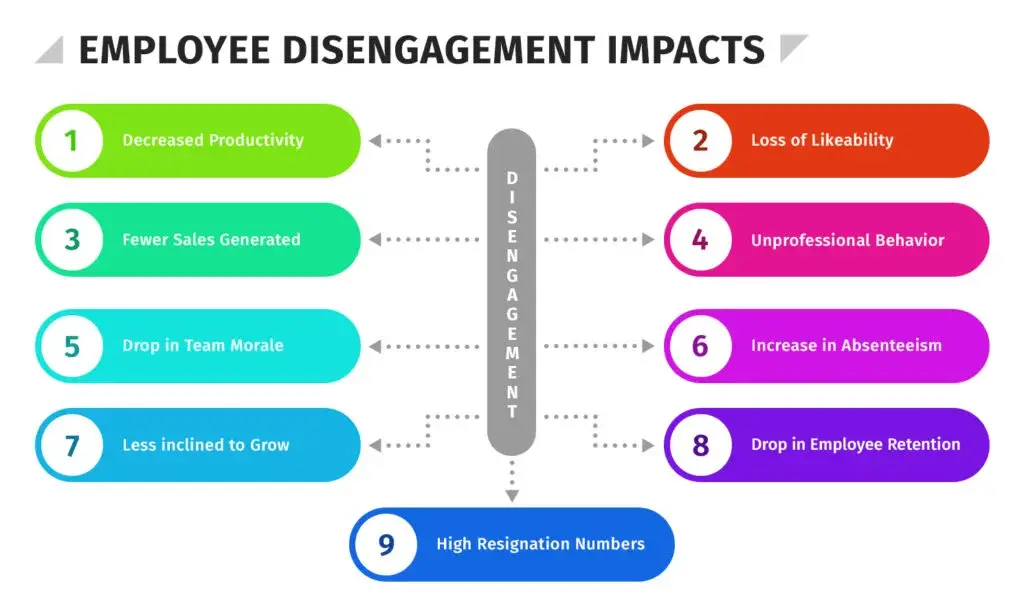
Discontinuation affects employees too, folks. Clear communication is key to keepin’ spirits high and makin’ sure everyone’s on the same page.
Employee impact and internal communication regarding product discontinuations involve managing the effects on staff and ensuring effective communication within the organization when a product is phased out.
This includes addressing employee concerns, maintaining morale, and ensuring that all team members are informed and aligned with the company's strategic decisions. Effective internal communication is crucial for navigating the challenges associated with discontinuation and ensuring a smooth transition.
Why Is Employee Impact and Internal Communication Important?
The Importance of Employee Communication and Management
Introduction
Let's talk about why it's super important to manage how employees feel and communicate well inside a company. It's a big deal, and here's why:
Addressing Employee Concerns
First, when a company stops making a product, it can make employees feel worried or unsure, especially those who worked closely with that product. It's like when a big change happens at school, and everyone feels a bit anxious.
Reasons Why Good Communication is Key
Here are some reasons why good communication is key:
1. Boosts Morale: Clear and caring communication can help keep employees happy and motivated. It's like getting a pep talk before a big game.
2. Maintains Productivity: When employees know what's happening, they can focus better on their work. It's like knowing the rules of a game so you can play your best.
3. Improves Retention: Employees are more likely to stay with the company if they feel valued and informed. It's like wanting to stay on a team where you feel appreciated.
Benefits of Effective Communication
Moreover, effective communication inside the company helps everyone work towards the same goals:
- Aligns the Organization: When everyone knows the plan, it's easier to work together. It's like a team working towards the same goal in a relay race.
- Facilitates a Smooth Transition: Good communication makes the change process smoother and more efficient. It's like having a clear map for a road trip.
Importance of Managing Employee Feelings
So, why is all this so important? Well, it's simple:
1. Reduces Anxiety: By being open and honest, companies can help ease employees' worries. It's like reassuring a friend who's nervous about a test.
2. Encourages Teamwork: When everyone understands the strategy, it encourages teamwork and cooperation. It's like a group of friends working together to solve a puzzle.
Conclusion
In the end, managing how employees feel and communicating well is like being a good coach. It helps keep the team strong, focused, and ready to tackle any challenges that come their way.
Final Thoughts
Remember, when companies take care of their employees and communicate clearly, everyone benefits. Employees feel valued, and the company can move forward with confidence and success.
Best Practices
- Best Practice #1: First of all, be open with employees about ending a product. Next, explain why it's happening and what it means. During this process, hold town halls and team meetings. Meanwhile, send regular updates. Finally, this clear approach builds trust and helps workers understand the big picture. Being honest keeps everyone on the same page during changes.
- Best Practice #2: Get workers involved in product changes. Let them help plan and make choices. Form teams from different areas to tackle problems. Ask for their ideas on how to make things better. This approach makes employees feel valued and part of the process. It cuts down on pushback and boosts teamwork.
- Best Practice #3: Give workers help and training when ending a product. Offer chances to grow their careers, learn new skills, or get advice. This support helps people adjust to changes and get ready for new jobs. It keeps the workplace positive during tough times. Caring for employees makes the transition smoother for everyone.
Learn More
- [Managing Product Discontinuation with Dignity - FasterCapital](https://fastercapital.com/content/Managing-Product-Discontinuation-with-Dignity.html)
- [How can you effectively discontinue a product? - LinkedIn](https://www.linkedin.com/advice/0/how-can-you-effectively-discontinue-product-y2qxf)
- [Practice of Product Discontinuation | Sequent Blog](https://sequentlearning.com/insights/the-practice-of-product-discontinuation/)
XXII. What Is ... Cross-Selling and Upselling Opportunities Regarding Product Discontinuations?
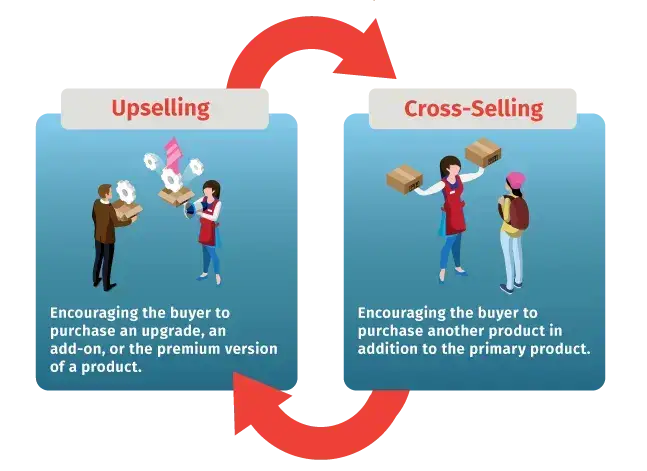
Finally, businesses should look for ways to cross-sell or upsell. This can help make up for any losses from discontinued products and keep the cash flowin’.
Cross-selling and upselling opportunities regarding product discontinuations involve leveraging the phase-out of a product to encourage customers to purchase related or higher-end alternatives. This strategy aims to maximize revenue by introducing customers to complementary or enhanced products that meet their needs after a product they previously used is discontinued. It requires a strategic approach to ensure that customers are both satisfied with their new purchases and remain loyal to the brand.
Why Are Cross-Selling and Upselling Important?
The Importance of Cross-Selling and Upselling
Introduction
Let's talk about why cross-selling and upselling are super important when a company stops making a product. It's like turning a challenge into a chance!
Addressing Customer Concerns
One, when a product goes away, customers might feel unsure or unhappy. It's like when your favorite snack is no longer available at the store. However, by offering them other great options, companies can make the experience better.
Key Reasons for Cross-Selling and Upselling
Here are some reasons why these strategies matter:
1. Maintain Customer Relationships: Suggesting other products helps keep customers happy and connected. It's like when a friend recommends a new book after you finish a series you love.
2. Boost Revenue: By encouraging customers to try more or different products, companies can keep sales strong. It's like offering a combo meal instead of just a burger.
Additional Benefits
Moreover, these strategies can help in other ways:
- Enhance Customer Satisfaction: When customers find something else they like, they feel more satisfied. It's like discovering a new favorite show after your old one ends.
- Increase Loyalty: Happy customers are more likely to stick around and keep buying. It's like staying loyal to a brand that always has something you love.
Business Advantages of Cross-Selling and Upselling
Additionally, cross-selling and upselling can help the company in these ways:
1. Increase Average Transaction Value: When customers buy more, the company earns more per sale. It's like adding toppings to a pizza order.
2. Strengthen Market Position: Showing a wide range of products makes the company look strong and diverse. It's like having a big toolbox with lots of useful tools.
Conclusion
In the end, cross-selling and upselling during product discontinuations are like finding a silver lining in a cloud. They help keep customers happy and the company successful.
Final Thoughts
Remember, offering great alternatives can turn a tricky situation into a win-win for both customers and the company. It's all about keeping everyone happy and moving forward together.
Best Practices
- Best Practice #1: First of all, grasp what customers truly need when ending a product. Next, use data and feedback to find appealing alternatives. Meanwhile, tailor suggestions to each customer's profile. Finally, this approach boosts your chances of successful cross-selling and upselling. Understanding individual preferences helps guide customers to products they'll likely want[2][4][7].
- Best Practice #2: Suggest products that closely match the one you're stopping. Show how these options are similar or better. Tell each customer why the new product fits their needs. Point out its best features and benefits. This helps people see the value in switching and makes the change easier for them[2][4][8].
- Best Practice #3: Give deals to get customers to try new products. Offer lower prices, product bundles, or reward points. Pairing items that work well together makes buying easier and more valuable. These perks help people switch to new options smoothly. Good deals keep customers happy and loyal during changes[2][4][8].
Learn More
- [Cross-Selling and Upselling: The Ultimate Guide [2024] - crowdspring](https://www.crowdspring.com/blog/upselling-cross-selling/)
- [Cross-Selling and Upselling in Sales: The Complete Guide - ARPEDIO](https://arpedio.com/white-space-analysis/cross-selling-upselling/)
- [Top 10 Upselling and Cross-Selling Strategies for 2023 - Helpware](https://www.helpware.com/blog/top-10-upselling-and-cross-selling-strategies-to-boost-sales)
Conclusion
So there ya have it! By keepin’ these points in mind, businesses can tackle discontinuing products like a champ, stayin’ competitive and responsive to what customers really want. Git-R-Done!
In wrapping up our discussion on discontinuing products, it’s clear that this process is more than just a business decision; it’s a strategic maneuver that can shape the future of a company. By understanding the reasons for discontinuation, assessing financial implications, and leveraging market research, businesses can navigate these waters effectively. Remember, clear communication with customers and employees is key to maintaining trust and loyalty during transitions. Plus, embracing best practices can turn challenges into opportunities for growth and innovation.
Now, I’d love to hear your thoughts!
What strategies have you found effective in managing product discontinuation?
Have you experienced the discontinuation of a product that has affected you?
Drop your comments below!
XXIII. Citations
I. What Are Reasons for Product Discontinuation?
[1]
https://www.selfmoneycare.com/post/why-do-companies-discontinue-products
[2]
https://www.adogy.com/terms/product-discontinuation/
[3]
https://www.linkedin.com/advice/1/what-key-factors-consider-when-discontinuing-product-decline
[4]
https://www.onsightapp.com/blog/knowing-discontinue-product
[5]
https://www.aweedmark.com/blog-main/discontinue-products
[6]
https://blog.clover.com/5-questions-ask-discontinuing-product/
[7]
https://www.accountingdepartment.com/blog/know-when-to-discontinue-a-product
[8]
https://blog.hubspot.com/marketing/how-to-start-a-blog
II. What Are the Financial Implications of Product Discontinuation?
[1] https://www.linkedin.com/advice/1/what-key-factors-consider-when-discontinuing-product-decline
[2] https://www.selfmoneycare.com/post/why-do-companies-discontinue-products
[3] https://www.adogy.com/terms/product-discontinuation/
[4] https://www.onsightapp.com/blog/knowing-discontinue-product
[5] https://intentionalaccounting.com/when-is-it-time-to-discontinue-a-product-or-service/
[6] https://www.accountingdepartment.com/blog/know-when-to-discontinue-a-product
[8] https://www.aweedmark.com/blog-main/discontinue-products
III. What Is The Role of Market Research Regarding Product Discontinuation?
[1] https://www.adogy.com/terms/product-discontinuation/
[2] https://www.linkedin.com/advice/0/how-can-you-effectively-discontinue-product-y2qxf
[3] https://www.selfmoneycare.com/post/why-do-companies-discontinue-products
[4] https://www.linkedin.com/advice/1/what-key-factors-consider-when-discontinuing-product-decline
[5] https://sequentlearning.com/insights/the-practice-of-product-discontinuation/
[6] https://www.onsightapp.com/blog/knowing-discontinue-product
[7] https://intentionalaccounting.com/when-is-it-time-to-discontinue-a-product-or-service/
[8] https://www.aweedmark.com/blog-main/discontinue-products
IV. What Is ... Future Trends in Product Discontinuation?
[1] https://www.aweedmark.com/blog-main/discontinue-products
[2] https://www.selfmoneycare.com/post/why-do-companies-discontinue-products
[3] https://www.adogy.com/terms/product-discontinuation/
[4] https://www.linkedin.com/advice/0/how-can-you-effectively-discontinue-product-y2qxf
[5] https://sequentlearning.com/insights/the-practice-of-product-discontinuation/
[6] https://www.linkedin.com/advice/1/what-key-factors-consider-when-discontinuing-product-decline
[7] https://www.onsightapp.com/blog/knowing-discontinue-product
[8] https://www.protolabs.com/resources/guides-and-trend-reports/product-development-trends/
V. What Is ... Impact on Customers Regarding Product Discontinuation?
[1] https://www.linkedin.com/advice/0/how-can-you-effectively-discontinue-product-y2qxf
[2] /content/files/server/api/core/bitstreams/ba09240b-883b-4613-8c71-bc26255397b6/content.pdf
[3] https://www.adogy.com/terms/product-discontinuation/
[4] https://www.linkedin.com/advice/1/what-key-factors-consider-when-discontinuing-product-decline
[5] https://www.selfmoneycare.com/post/why-do-companies-discontinue-products
[6] https://www.onsightapp.com/blog/knowing-discontinue-product
[7] https://sequentlearning.com/insights/the-practice-of-product-discontinuation/
[8] https://intentionalaccounting.com/when-is-it-time-to-discontinue-a-product-or-service/
VI. What Is ... Customer Feedback and Product Development Regarding Product Discontinuation?
[1] /content/files/server/api/core/bitstreams/ba09240b-883b-4613-8c71-bc26255397b6/content.pdf
[2] https://www.uschamber.com/co/grow/customers/communicating-product-discontinuation-to-customers
[3] https://www.selfmoneycare.com/post/why-do-companies-discontinue-products
[4] https://www.linkedin.com/advice/0/how-can-you-effectively-discontinue-product-y2qxf
[6] https://www.onsightapp.com/blog/knowing-discontinue-product
[7] https://www.adogy.com/terms/product-discontinuation/
[8] https://www.aweedmark.com/blog-main/discontinue-products
VII. What Is ... Customer Retention Strategies Regarding Product Discontinuation?
[1] https://www.linkedin.com/advice/0/how-can-you-effectively-discontinue-product-y2qxf
[2] /content/files/server/api/core/bitstreams/ba09240b-883b-4613-8c71-bc26255397b6/content.pdf
[3] https://www.adogy.com/terms/product-discontinuation/
[4] https://www.selfmoneycare.com/post/why-do-companies-discontinue-products
[5] https://www.onsightapp.com/blog/knowing-discontinue-product
[6] https://www.uschamber.com/co/grow/customers/communicating-product-discontinuation-to-customers
[7] https://sequentlearning.com/insights/the-practice-of-product-discontinuation/
[8] https://www.linkedin.com/advice/1/what-key-factors-consider-when-discontinuing-product-decline
VIII. What Is ... The Emotional Side of Product Discontinuation?
[1] https://www.linkedin.com/pulse/product-discontinuation-heartbreak-managers-finding-ahmed-galal-vu2qf
[2] /content/files/server/api/core/bitstreams/ba09240b-883b-4613-8c71-bc26255397b6/content.pdf
[3] https://pdxscholar.library.pdx.edu/cgi/viewcontent.cgi?article=1135&context=studentsymposium
[4] https://fastercapital.com/content/Managing-Product-Discontinuation-with-Dignity.html
[5] https://www.linkedin.com/advice/0/how-can-you-effectively-discontinue-product-y2qxf
[6] https://www.aweedmark.com/blog-main/discontinue-products
[7] https://www.adogy.com/terms/product-discontinuation/
[8] https://www.selfmoneycare.com/post/why-do-companies-discontinue-products
IX. What Is ... Communication Strategies Regarding Product Discontinuation?
[1] https://www.linkedin.com/advice/0/how-can-you-effectively-discontinue-product-y2qxf
[2] /content/files/server/api/core/bitstreams/ba09240b-883b-4613-8c71-bc26255397b6/content.pdf
[3] https://fastercapital.com/content/Managing-Product-Discontinuation-with-Dignity.html
[4] https://www.adogy.com/terms/product-discontinuation/
[5] https://www.linkedin.com/pulse/product-discontinuation-heartbreak-managers-finding-ahmed-galal-vu2qf
[6] https://www.aweedmark.com/blog-main/discontinue-products
[7] https://sequentlearning.com/insights/the-practice-of-product-discontinuation/
[8] https://www.selfmoneycare.com/post/why-do-companies-discontinue-products
X. What Is ... Marketing Opportunities Regarding Product Discontinuation?
[1] https://www.adogy.com/terms/product-discontinuation/
[2] /content/files/server/api/core/bitstreams/ba09240b-883b-4613-8c71-bc26255397b6/content.pdf
[3] https://www.selfmoneycare.com/post/why-do-companies-discontinue-products
[4] https://www.linkedin.com/advice/0/how-can-you-effectively-discontinue-product-y2qxf
[5] https://www.onsightapp.com/blog/knowing-discontinue-product
[6] https://www.uschamber.com/co/grow/customers/communicating-product-discontinuation-to-customers
[7] https://www.linkedin.com/advice/1/what-key-factors-consider-when-discontinuing-product-decline
[8] https://www.linkedin.com/pulse/product-discontinuation-heartbreak-managers-finding-ahmed-galal-vu2qf
XI. What Is ... Handling Backlash and Negative Publicity Regarding Product Discontinuation?
[1] /content/files/server/api/core/bitstreams/ba09240b-883b-4613-8c71-bc26255397b6/content.pdf
[2] https://fastercapital.com/topics/how-to-avoid-backlash,-controversy,-and-legal-issues.html
[3] https://www.uschamber.com/co/grow/customers/communicating-product-discontinuation-to-customers
[4] https://www.linkedin.com/advice/0/how-can-you-effectively-discontinue-product-y2qxf
[5] https://fastercapital.com/content/Managing-Product-Discontinuation-with-Dignity.html
[6] https://otterpr.com/handling-negative-press/
[7] https://brandingstrategyinsider.com/managing-brand-backlash/
[8] https://www.adogy.com/terms/product-discontinuation/
XII. What Is ... Inventory Management Post Product Discontinuation?
[1] /content/files/server/api/core/bitstreams/ba09240b-883b-4613-8c71-bc26255397b6/content.pdf
[2] https://cashflowinventory.com/blog/obsolete-inventory/
[3] https://www.selfmoneycare.com/post/why-do-companies-discontinue-products
[4] https://www.linkedin.com/advice/0/how-can-you-effectively-discontinue-product-y2qxf
[5] https://www.uschamber.com/co/grow/customers/communicating-product-discontinuation-to-customers
[6] https://www.adogy.com/terms/product-discontinuation/
[7] https://sequentlearning.com/insights/the-practice-of-product-discontinuation/
[8] https://fastercapital.com/content/Managing-Product-Discontinuation-with-Dignity.html
XIII. What Is ... Supplier and Distribution Challenges Regarding Product Discontinuation?
[1] /content/files/server/api/core/bitstreams/ba09240b-883b-4613-8c71-bc26255397b6/content.pdf
[2] https://www.kmco.com/insights/7-common-challenges-facing-distributors-and-wholesalers/
[3] https://www.selfmoneycare.com/post/why-do-companies-discontinue-products
[4] https://www.adogy.com/terms/product-discontinuation/
[5] https://sequentlearning.com/insights/the-practice-of-product-discontinuation/
[6] https://www.onsightapp.com/blog/knowing-discontinue-product
[7] https://www.linkedin.com/advice/0/how-can-you-effectively-discontinue-product-y2qxf
[8] https://fastercapital.com/content/Managing-Product-Discontinuation-with-Dignity.html
IXV. What Is ... Phasing Out vs. Immediate Discontinuation Regarding Product Discontinuation?
[1] https://www.adogy.com/terms/product-discontinuation/
[2] /content/files/server/api/core/bitstreams/ba09240b-883b-4613-8c71-bc26255397b6/content.pdf
[3] https://www.linkedin.com/advice/1/what-key-factors-consider-when-discontinuing-product-decline
[4] https://www.linkedin.com/advice/0/how-can-you-effectively-discontinue-product-y2qxf
[5] https://fastercapital.com/content/Managing-Product-Discontinuation-with-Dignity.html
[6] https://www.linkedin.com/pulse/product-discontinuation-heartbreak-managers-finding-ahmed-galal-vu2qf
[7] https://www.onsightapp.com/blog/knowing-discontinue-product
[8] https://www.uschamber.com/co/grow/customers/communicating-product-discontinuation-to-customers
XV. What Is ... Legal and Ethical Considerations Regarding Product Discontinuation?
[1] /content/files/server/api/core/bitstreams/ba09240b-883b-4613-8c71-bc26255397b6/content.pdf
[2] https://www.adogy.com/terms/product-discontinuation/
[3] https://www.linkedin.com/advice/0/how-can-you-effectively-discontinue-product-y2qxf
[4] https://fastercapital.com/content/Managing-Product-Discontinuation-with-Dignity.html
[5] https://www.linkedin.com/advice/1/what-key-factors-consider-when-discontinuing-product-decline
[6] https://www.selfmoneycare.com/post/why-do-companies-discontinue-products
[7] https://www.onsightapp.com/blog/knowing-discontinue-product
[8] https://www.ncbi.nlm.nih.gov/pmc/articles/PMC9360408/
XVI. What Is ... Environmental and Sustainability Considerations Regarding Product Discontinuation?
[1] https://www.adogy.com/terms/product-discontinuation/
[2] https://www.selfmoneycare.com/post/why-do-companies-discontinue-products
[3] https://fastercapital.com/content/Managing-Product-Discontinuation-with-Dignity.html
[4] /content/files/server/api/core/bitstreams/ba09240b-883b-4613-8c71-bc26255397b6/content.pdf
[6] https://www.linkedin.com/advice/1/what-key-factors-consider-when-discontinuing-product-decline
[7] https://www.linkedin.com/advice/0/how-can-you-effectively-discontinue-product-y2qxf
[8] https://ecohedge.com/blog/product-and-product-life-cycle-maximizing-sustainability/
XVII. What Is ... Case Studies of Successful Product Discontinuations?
[1] /content/files/server/api/core/bitstreams/ba09240b-883b-4613-8c71-bc26255397b6/content.pdf
[2] https://www.selfmoneycare.com/post/why-do-companies-discontinue-products
[3] https://www.tandfonline.com/doi/full/10.1080/19397038.2015.1099757
[4] https://www.linkedin.com/advice/0/how-can-you-effectively-discontinue-product-y2qxf
[5] https://fastercapital.com/content/Managing-Product-Discontinuation-with-Dignity.html
[6] https://sequentlearning.com/insights/the-practice-of-product-discontinuation/
[7] https://www.linkedin.com/pulse/product-discontinuation-heartbreak-managers-finding-ahmed-galal-vu2qf
[8] https://www.adogy.com/terms/product-discontinuation/
XVIII. What Is ... Lessons from Failed Discontinuations Regarding Product Discontinuations?
[1] /content/files/server/api/core/bitstreams/ba09240b-883b-4613-8c71-bc26255397b6/content.pdf
[2] https://fastercapital.com/content/Managing-Product-Discontinuation-with-Dignity.html
[3] https://sequentlearning.com/insights/the-practice-of-product-discontinuation/
[4] https://www.linkedin.com/pulse/product-discontinuation-heartbreak-managers-finding-ahmed-galal-vu2qf
[5] https://www.linkedin.com/advice/0/how-can-you-effectively-discontinue-product-y2qxf
[7] https://www.selfmoneycare.com/post/why-do-companies-discontinue-products
[8] https://www.adogy.com/terms/product-discontinuation/
IXX. What Is ... Reintroducing Discontinued Products Regarding Product Discontinuations?
[1] /content/files/server/api/core/bitstreams/ba09240b-883b-4613-8c71-bc26255397b6/content.pdf
[3] https://www.linkedin.com/advice/0/how-can-you-effectively-discontinue-product-y2qxf
[4] https://www.selfmoneycare.com/post/why-do-companies-discontinue-products
[5] https://fastercapital.com/content/Managing-Product-Discontinuation-with-Dignity.html
[6] https://www.onsightapp.com/blog/knowing-discontinue-product
[7] https://www.linkedin.com/pulse/product-discontinuation-heartbreak-managers-finding-ahmed-galal-vu2qf
[8] https://ecohedge.com/blog/product-and-product-life-cycle-maximizing-sustainability/
XX. What Is ... Reintroducing Discontinued Products Regarding Employee and Internal Dynamics?
[1] /content/files/server/api/core/bitstreams/ba09240b-883b-4613-8c71-bc26255397b6/content.pdf
[2] https://fastercapital.com/content/Managing-Product-Discontinuation-with-Dignity.html
[4] https://www.linkedin.com/advice/0/how-can-you-effectively-discontinue-product-y2qxf
[5] https://www.linkedin.com/pulse/product-discontinuation-heartbreak-managers-finding-ahmed-galal-vu2qf
[6] https://www.onsightapp.com/blog/knowing-discontinue-product
[7] https://www.selfmoneycare.com/post/why-do-companies-discontinue-products
[8] https://sequentlearning.com/insights/the-practice-of-product-discontinuation/
XXI. What Is ... Employee Impact and Internal Communication Regarding Product Discontinuations?
[1] https://www.linkedin.com/advice/0/how-can-you-effectively-discontinue-product-y2qxf
[2] /content/files/server/api/core/bitstreams/ba09240b-883b-4613-8c71-bc26255397b6/content.pdf
[3] https://www.adogy.com/terms/product-discontinuation/
[4] https://www.fastercapital.com/content/Managing-Product-Discontinuation-with-Dignity.html
[5] https://fastercapital.com/content/Managing-Product-Discontinuation-with-Dignity.html
[6] https://www.linkedin.com/advice/1/what-key-factors-consider-when-discontinuing-product-decline
[7] https://www.selfmoneycare.com/post/why-do-companies-discontinue-products
[8] https://sequentlearning.com/insights/the-practice-of-product-discontinuation/
XXII. What Is ... Cross-Selling and Upselling Opportunities Regarding Product Discontinuations?
[1] /content/files/server/api/core/bitstreams/ba09240b-883b-4613-8c71-bc26255397b6/content.pdf
[2] https://www.crowdspring.com/blog/upselling-cross-selling/
[3] https://www.linkedin.com/advice/0/how-can-you-effectively-discontinue-product-y2qxf
[4] https://arpedio.com/white-space-analysis/cross-selling-upselling/
[5] https://www.selfmoneycare.com/post/why-do-companies-discontinue-products
[6] https://www.adogy.com/terms/product-discontinuation/
[7] https://www.investopedia.com/terms/c/cross-sell.asp
[8] https://www.helpware.com/blog/top-10-upselling-and-cross-selling-strategies-to-boost-sales
Join Our Mailing List
We're excited about the Gastrorejuvenator Crowdfunding Campaign, and Invite You to Become a Part of It! Join Now
Free Annual Guide
Emerging Trends in the Health and Nutrition Sector 2024: The Ultimate Guide
Click for Free Annual Guide
Discover the latest health and nutrition trends shaping 2024 in our comprehensive guide. From personalized nutrition to sustainable eating, explore the innovations transforming wellness. Click to unlock expert insights and stay ahead of the curve in health and nutrition. Learn More! Top of page




